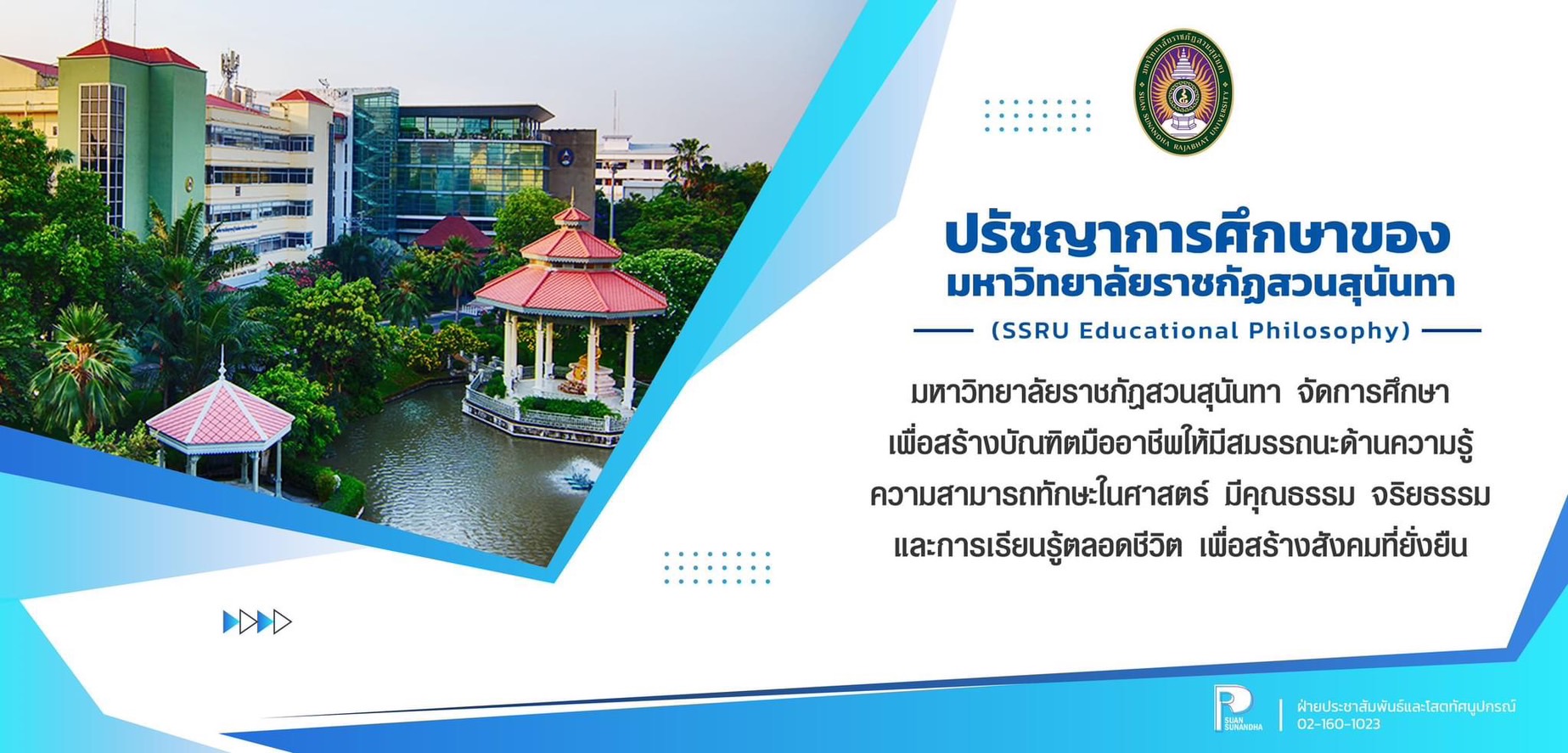 ขวัญใจนักปั่นสล็อตแบบใหม่ live22 เว็บตรงไม่ผ่านเอเย่นต์ API สุดยอดที่ดีเยี่ยมที่สุด สมัครเป็นสมาชิกใหม่ได้เลย!
ขวัญใจนักปั่นสล็อตแบบใหม่ live22 เว็บตรงไม่ผ่านเอเย่นต์ API สุดยอดที่ดีเยี่ยมที่สุด สมัครเป็นสมาชิกใหม่ได้เลย!
ขวัญใจนักปั่นสล็อตตัวจริงต้อง slot สล็อตเว็บไซต์ตรงไม่ผ่านเอเย่นต์ API ระดับโลกที่ดีที่สุดจากค่ายเกมชั้นนำเยอะ! บอกเลยว่า คุณจะหาเว็บตรงไม่ผ่านเอเย่นต์ที่ตอบโจทย์รวมทั้งเหมาะสมที่สุดขนาดนี้มิได้อีกแล้ว พวกเราเป็นเว็บตรงที่มีความน่าวางใจรวมทั้งความปลอดภัยสูง ทางเข้าหาง่าย มีฐานสมาชิกมากไม่น้อยเลยทีเดียว มีเกมให้เลือกเล่นมากกว่า 2,000 เกม เล่นผ่านเว็บได้ทันที
 มิได้มีเพียงแค่เกมจาก สล็อต ด้วยครับ ยังมีเกมสล็อตอื่นๆอีกเพียบ บันเทิงใจกับเกมพนันได้ตามอยาก ฝากถอนไม่มีกั๊ก ไม่มีอย่างต่ำในการฝากถอน บอกเลยว่า นี่แหละครับเป็นเว็บตรงขวัญใจนักปั่นสล็อตรุ่นใหม่ตัวจริง มาลองกันได้เลย!
มิได้มีเพียงแค่เกมจาก สล็อต ด้วยครับ ยังมีเกมสล็อตอื่นๆอีกเพียบ บันเทิงใจกับเกมพนันได้ตามอยาก ฝากถอนไม่มีกั๊ก ไม่มีอย่างต่ำในการฝากถอน บอกเลยว่า นี่แหละครับเป็นเว็บตรงขวัญใจนักปั่นสล็อตรุ่นใหม่ตัวจริง มาลองกันได้เลย!
 Live22 เพราะเหตุไรสายปั่นสล็อตมือโปรถึงเลือกใช้บริการกับพวกเรา!
Live22 เพราะเหตุไรสายปั่นสล็อตมือโปรถึงเลือกใช้บริการกับพวกเรา!
บอกเลยว่าเว็บสล็อตของเราถือเป็นเว็บไซต์ที่สายปั่นสล็อตมืออาชีพเลือกใช้บริการสูงที่สุดในเวลานี้เลยครับ ด้วยเหตุว่าเว็บตรงของพวกเรา live22 นั้นตอบสนองความต้องการของนักเดิมพันมือโปรได้แบบครบวงจรที่สุด เล่นเว็บแห่งนี้เว็บเดียว ไม่ต้องเปลี่ยนเว็บอื่นให้ยุ่งยาก ได้ครบทุกอย่างที่ปรารถนาแน่นอนขอรับ ซึ่งการเลือกใช้บริการกับเว็บไซต์ตรงแท้ 100% นั้น มาพร้อมข้อดีจำนวนมากมากมาย รวมทั้งนี่เป็นเหตุผลที่นักปั่นสล็อตออนไลน์มืออาชีพเลือกใช้บริการกับเรา มาดูกันเลย! เลทโก!
• เกมพนันที่มากกว่า: แน่นอนครับว่า เว็บของเรามิได้เปิดให้บริการแต่เกมสล็อตแค่นั้น ยังมีเกมเดิมพันอื่นอีกมากมายมากไม่น้อยเลยทีเดียวให้ท่านได้เลือกเล่น ด้วยเหตุนั้น ถ้าคุณเลือกใช้บริการกับพวกเรา ก็มีเกมเดิมพันครบวงจรเลยล่ะครับ
• ความเสถียรภาพของเซิร์ฟเวอร์: สล็อต ระบบของพวกเรานั้นออกแบบมาให้สามารถรองรับการใช้งานของผู้เล่นหลายชิ้นๆพร้อมกันได้แบบชิวๆแม้จะเล่นในช่วงที่คนหนาแน่นแม้กระนั้นก็ไม่กระดอน กระตุก หรือหลุดอย่างไม่ต้องสงสัยนะครับ
• ฟีพบร์โบนัสมากมายก่ายกอง: ด้วยความที่พวกเรามีเกมสล็อตบนเว็บเยอะแยะ ก็ทำให้มีฟีเจอร์โบนัสเกมมีความมากมายหลาย มือโปรส่วนมากก็จะเลือกเกมที่สมควร เลือกเกมที่มีฟีพบร์โบนัสที่ต้องการได้มากขึ้นนั่นเองครับ
• รองรับการเล่น live22 ผ่านมือถือเต็มระบบ: อินเทอร์เฟซรวมทั้งการควบคุมเกมผ่านหน้าจอมือถือของพวกเรานั้น ถูกวางแบบและก็ปรับปรุงแก้ไขให้ใช้งานผ่านจอมือถือได้ง่ายมากยิ่งขึ้น ซึ่งคุณสามารถเลือกได้เลยว่า จะใช้งานแบบแนวดิ่งหรือแนวยาว
• โปรโมชั่นและก็กิจกรรมดีที่สุด: มั่นใจเลยครับว่า เพียงแค่เลือกใช้บริการกับเรา คุณก็จะได้รับสิทธิพิเศษดีๆมากมายจากโปรโมชั่นแล้วก็กิจกรรมที่ดีเยี่ยมที่สุด เครดิตฟรี รับยอดเสีย หรือรับค่าคอมก็ทำเป็นแบบง่ายๆสะดวกที่สุดแล้วล่ะขอรับ
แนวทางตั้งงบประมาณในการเล่น slot แบบง่ายๆทำเงินได้จริง!
มาขอรับทุกคน! มาลองตั้งงบในการเล่น slot กันเหอะ! การเล่นสล็อตออนไลน์นั้น ไม่ว่าใครก็เล่นได้แน่ๆ แต่ว่าการเล่นแล้วทำเงินได้ บางทีก็อาจจะไม่ใช่เรื่องที่ทุกคนจะทำเป็น พื้นฐานสำหรับการทำเงินของเกม live22 ที่ยอดเยี่ยมก็คือ การตั้งงบสำหรับการเล่นนี่แหละนะครับ การตั้งงบประมาณสำหรับเพื่อการเล่นจะช่วยให้คุณควบคุมงบก้าวหน้าขึ้น วางแผนเล่น รวมทั้งวางแผนใช้เงินสำหรับในการเล่นเจริญขึ้นอีกด้วย ด้วยเหตุนี้ ในพาร์ทนี้ พวกเราจะพาคุณมาดูเลยว่า มีแนวทางตั้งงบเล่นสล็อตแบบไหนบ้าง เลทโก!
• กำหนดทุนหลักต่อวัน: การกำหนดทุนหลักต่อวันนั้น จะช่วยทำให้คุณเล่นสล็อตได้นานขึ้น และไม่กระทบกับรายจ่าย
ในชีวิตประจำวันของคุณ คุณอาจจะตั้งทุนหลักต่อสัปดาห์ก็ได้เช่นเดียวกัน เพื่อให้ควบคุมงบประมาณสำหรับเพื่อการเล่นเจริญขึ้นขอรับ
• แบ่งทุนสำรอง: การแบ่งทุนที่มีออกเป็น 2 กองด้วยกัน เป็นต้นว่า 70% สำหรับเล่น slot จริง รวมทั้ง 30% เป็นทุนสำรองในการเล่นเกมใหม่โดยไม่กระทบกับทุนหลัก มันก็จะช่วยเพิ่มตัวเลือกสำหรับเพื่อการมองหาเกมที่เหมาะสมได้มากขึ้นด้วย
• ตั้งเป้าให้แน่ชัด: ไม่ว่าจะเป็นการได้กำไรหรือขาดทุน คุณก็จะต้องกำหนดจุดมุ่งหมายให้แจ้งชัดเอาไว้ขอรับ มันจะช่วยให้คุณเล่นอย่างมีวินัยเพิ่มมากขึ้น ไม่เล่นเกินกว่าที่ตั้งดวงใจเอาไว้ ถ้าหากได้กำไรหรือขาดทุนเกินที่ตั้งเอาไว้ก็จะต้องเลิกทันที
• ทบทวนผลสรุปเสมอ: การทบทวนผลลัพธ์สำหรับเพื่อการเล่นเป็นรายสัปดาห์จะช่วยทำให้คุณแลเห็นภาพรวมของการเล่นสล็อตในแต่ละอาทิตย์เจริญขึ้น ถ้าเกิดมีการขาดทุนก็จะได้ปรับกลยุทธ์เล่นที่เหมาะสมแล้วก็ดีขึ้นได้นั่นเองนะครับ
มือโปรเลือก สล็อต แล้วตอนนี้! คุณล่ะเลือกรึยัง? มาลงทะเบียนใหม่ฟรี รับเครดิตฟรีได้อีกเยอะ สมัครเลย!
มืออาชีพเลือกเรา live22 กันแล้ว คุณล่ะขอรับ พร้อมจะเลือกใช้บริการกับพวกเรารึยัง? คุณจะเห็นได้เลยขอรับว่า
การเลือกใช้บริการกับเรานั้นเป็นสิ่งที่นักเดิมพันมือโปรเยอะมากต่างให้เหตุผลเลยว่า นี่คือเว็บไซต์ตรงที่มีความพร้อมเพรียง
ในทุกด้านสูงที่สุดเลยก็ว่าได้ มีเกมพนันแบบครบๆมีความเสถียรภาพแล้วก็ปลอดภัย เล่นผ่านมือถือได้ง่าย สิทธิพิเศษดีที่สุดขณะนี้อีกด้วย ซึ่งคุณสามารถใช้เทคนิคการตั้งงบประมาณให้สมควรแล้วมาทำเงินได้ง่ายแน่นอน โดยเหตุนั้น ถ้าคุณต้องการเอนหน้าจอยราวมือโปรของเราล่ะก็ มาสมัครสมาชิก slot ใหม่ได้แล้ววันนี้ สมัครเป็นสมาชิกใหม่ฟรี สมัครเลย!
เกมสล็อต สล็อต Likeslot123.com 25 กรกฎาคม 68 Colin ยืน 1 เรื่องเกมสล็อต สล็อตปลดหนี้ได้ง่ายๆ Top 67
ขอขอบคุณมากby web สล็อต
https://rebrand.ly/likeslot123


 เพราะเหตุว่าไม่ว่าจะเป็นเกมสล็อตล้นหลามจากค่ายเกมชั้นนำระดับโลก โปรโมชั่นและกิจกรรมดีๆเยอะแยะ ทางเข้าเว็บหาง่าย slot ฝากถอนไม่มีกั๊กกับระบบฝากถอนออโต้ แอดมินดูแลดีตลอด 1 วัน เล่นผ่านวัสดุอุปกรณ์อะไรก็ได้ ไม่มีอย่างต่ำสำหรับในการฝากถอนด้วย บอกเลยว่า เว็บตรงที่ครบถ้วนบริบูรณ์ขนาดนี้ ไม่เล่นแล้วจะเสียดายนะครับ ด้วยเหตุดังกล่าว มาสมัครสมาชิกใหม่กันได้เลย คลิกเลย!
เพราะเหตุว่าไม่ว่าจะเป็นเกมสล็อตล้นหลามจากค่ายเกมชั้นนำระดับโลก โปรโมชั่นและกิจกรรมดีๆเยอะแยะ ทางเข้าเว็บหาง่าย slot ฝากถอนไม่มีกั๊กกับระบบฝากถอนออโต้ แอดมินดูแลดีตลอด 1 วัน เล่นผ่านวัสดุอุปกรณ์อะไรก็ได้ ไม่มีอย่างต่ำสำหรับในการฝากถอนด้วย บอกเลยว่า เว็บตรงที่ครบถ้วนบริบูรณ์ขนาดนี้ ไม่เล่นแล้วจะเสียดายนะครับ ด้วยเหตุดังกล่าว มาสมัครสมาชิกใหม่กันได้เลย คลิกเลย!
 เครดิตฟรี เปลี่ยนเป็นชื่อที่ติดหูของเหล่าผู้เล่นเกมสล็อตออนไลน์ในยุคปัจจุบัน ด้วยความครบเครื่องอีกทั้งด้านเกมที่หลากหลาย ระบบการเล่นสล็อต888ที่ลื่นไหล และโบนัสที่แตกง่ายแบบไม่มีกั๊ก ทำให้ตรงนี้เปลี่ยนเป็น แหล่งรวมเกม สล็อตแตกหนัก ที่ได้รับความนิยมสูงสุดจากนักปั่นสล็อตทั่วประเทศไทย โดยเฉพาะค่ายเกมดังอย่าง พีจีสล็อต ที่ได้รับการยืนยันว่าเป็นเกมแท้ 100% มีลิขสิทธิ์ถูกต้อง เล่นแล้วได้เงินจริง ไม่มีล็อกยูส
เครดิตฟรี เปลี่ยนเป็นชื่อที่ติดหูของเหล่าผู้เล่นเกมสล็อตออนไลน์ในยุคปัจจุบัน ด้วยความครบเครื่องอีกทั้งด้านเกมที่หลากหลาย ระบบการเล่นสล็อต888ที่ลื่นไหล และโบนัสที่แตกง่ายแบบไม่มีกั๊ก ทำให้ตรงนี้เปลี่ยนเป็น แหล่งรวมเกม สล็อตแตกหนัก ที่ได้รับความนิยมสูงสุดจากนักปั่นสล็อตทั่วประเทศไทย โดยเฉพาะค่ายเกมดังอย่าง พีจีสล็อต ที่ได้รับการยืนยันว่าเป็นเกมแท้ 100% มีลิขสิทธิ์ถูกต้อง เล่นแล้วได้เงินจริง ไม่มีล็อกยูส สล็อต888 เป็นเว็บไซต์ตรงที่ให้บริการเกมสล็อตออนไลน์แบบครบวงจร รวบรวมเกมจากนานาประการค่ายดังสุดยอด อาทิ PG SLOT, SLOTXO, JOKER GAMING,
สล็อต888 เป็นเว็บไซต์ตรงที่ให้บริการเกมสล็อตออนไลน์แบบครบวงจร รวบรวมเกมจากนานาประการค่ายดังสุดยอด อาทิ PG SLOT, SLOTXO, JOKER GAMING,  เกมดังจากพีจีสล็อตที่น่าเล่น ได้แก่
เกมดังจากพีจีสล็อตที่น่าเล่น ได้แก่
 Tangtem168 สมัครฟรี ทดลองเล่นได้โดยทันที พร้อมระบบออโต้ ฝากถอนไว ไม่มีอย่างต่ำ เล่นง่ายทุกเกม ลุ้นแตกหนักแต่ละวัน
Tangtem168 สมัครฟรี ทดลองเล่นได้โดยทันที พร้อมระบบออโต้ ฝากถอนไว ไม่มีอย่างต่ำ เล่นง่ายทุกเกม ลุ้นแตกหนักแต่ละวัน เพราะเหตุว่านี่เป็นเว็บตรงจาก pgslot168 ที่มาพร้อมความพร้อมเพรียงในทุกด้าน อีกทั้งเรื่องระบบที่นำสมัย ความปลอดภัยระดับสากล การบริการสุดมืออาชีพ และที่สำคัญคือ “แจกหนักทุกยูส ไม่มีลิมิต” ไม่ว่าคุณจะเป็นสายปั่นมือใหม่หรือมืออาชีพ ก็มีสิทธิ์มั่งมีแบบไม่ทันรู้ตัวถึงที่กะไว้นี่
เพราะเหตุว่านี่เป็นเว็บตรงจาก pgslot168 ที่มาพร้อมความพร้อมเพรียงในทุกด้าน อีกทั้งเรื่องระบบที่นำสมัย ความปลอดภัยระดับสากล การบริการสุดมืออาชีพ และที่สำคัญคือ “แจกหนักทุกยูส ไม่มีลิมิต” ไม่ว่าคุณจะเป็นสายปั่นมือใหม่หรือมืออาชีพ ก็มีสิทธิ์มั่งมีแบบไม่ทันรู้ตัวถึงที่กะไว้นี่ pgslot168 มิได้เป็นเพียงแต่เว็บไซต์สล็อตอีกหนึ่งที่ แต่ว่าเป็นประสบการณ์ใหม่ที่ผสมผสานความสนุกสนานร่าเริง ความยั่งยืน รวมทั้งโอกาสสร้างรายได้ในแบบที่คุณควบคุมได้เอง คุณไม่มีความจำเป็นต้องมีทุนล้นหลาม หรือมีประสบการณ์สูง ก็สามารถเริ่มและก็เติบโตถึงที่กะไว้นี่ เพราะพวกเราเชื่อในความเท่าเทียมของผู้เล่นทุกคน
pgslot168 มิได้เป็นเพียงแต่เว็บไซต์สล็อตอีกหนึ่งที่ แต่ว่าเป็นประสบการณ์ใหม่ที่ผสมผสานความสนุกสนานร่าเริง ความยั่งยืน รวมทั้งโอกาสสร้างรายได้ในแบบที่คุณควบคุมได้เอง คุณไม่มีความจำเป็นต้องมีทุนล้นหลาม หรือมีประสบการณ์สูง ก็สามารถเริ่มและก็เติบโตถึงที่กะไว้นี่ เพราะพวกเราเชื่อในความเท่าเทียมของผู้เล่นทุกคน

 2024 Danelle โอนไว jinda55ไม่จำกัดยอดโอน Top 31
2024 Danelle โอนไว jinda55ไม่จำกัดยอดโอน Top 31
 • สล็อต เอกลักษณ์ที่จำง่าย:
• สล็อต เอกลักษณ์ที่จำง่าย:  • สล็อต โบนัสฟรีสปินแจกหลายครั้ง: เมื่อคุณได้รับเครื่องหมาย Scatter ครบ 4 ตัวขึ้นไป ก็ไปสู่รอบฟรีสปินของเกมได้เลย ซึ่งทุกคนก็ต่างบอกเป็นเสียงเดียวกันเลยว่า Treasures of Aztec แจกฟรีสปินบ่อยครั้ง ทำให้ทำเงินได้ง่ายยิ่งกว่าเกมอื่น
• สล็อต โบนัสฟรีสปินแจกหลายครั้ง: เมื่อคุณได้รับเครื่องหมาย Scatter ครบ 4 ตัวขึ้นไป ก็ไปสู่รอบฟรีสปินของเกมได้เลย ซึ่งทุกคนก็ต่างบอกเป็นเสียงเดียวกันเลยว่า Treasures of Aztec แจกฟรีสปินบ่อยครั้ง ทำให้ทำเงินได้ง่ายยิ่งกว่าเกมอื่น

 ถ้าเกิดโลกของเกมสล็อตออนไลน์คือสนามทดสอบ pgslot ก็คือหนึ่งในตัวเก็งที่พร้อมจะขึ้นแท่นเว็บสล็อตลำดับที่หนึ่งของปี 2025 อย่างแน่นอน เพราะตรงนี้ไม่ได้เป็นแค่เว็บไซต์ที่เปิดมาแล้วหวังจะเกาะกระแสเท่านั้น แต่ pgslot เป็นเว็บสล็อตที่ “กล้าต่าง” รวมทั้ง กล้าทำ ในสิ่งที่คนเล่นpgslotต้องการจริงๆยิ่งไปกว่านั้น สล็อต ยังมีระบบออโต้ที่เร็วเกินหน้าเกินตาเว็บไซต์อื่น ฝาก-ถอนเร็วทันใจด้านในไม่ถึง 5 วินาที สมัครเสร็จรับเครดิตฟรีได้โดยทันทีแบบไม่ต้องแชร์อะไรทั้งนั้น พร้อมกิจกรรมแล้วก็โปรโมชั่นที่แจกจริง ไม่หลอก ไม่แปะข้อตกลงแบบวุ่นวาย อ่านแล้วเข้าใจเลย ทำเป็นก็ยอมรับได้จริง
ถ้าเกิดโลกของเกมสล็อตออนไลน์คือสนามทดสอบ pgslot ก็คือหนึ่งในตัวเก็งที่พร้อมจะขึ้นแท่นเว็บสล็อตลำดับที่หนึ่งของปี 2025 อย่างแน่นอน เพราะตรงนี้ไม่ได้เป็นแค่เว็บไซต์ที่เปิดมาแล้วหวังจะเกาะกระแสเท่านั้น แต่ pgslot เป็นเว็บสล็อตที่ “กล้าต่าง” รวมทั้ง กล้าทำ ในสิ่งที่คนเล่นpgslotต้องการจริงๆยิ่งไปกว่านั้น สล็อต ยังมีระบบออโต้ที่เร็วเกินหน้าเกินตาเว็บไซต์อื่น ฝาก-ถอนเร็วทันใจด้านในไม่ถึง 5 วินาที สมัครเสร็จรับเครดิตฟรีได้โดยทันทีแบบไม่ต้องแชร์อะไรทั้งนั้น พร้อมกิจกรรมแล้วก็โปรโมชั่นที่แจกจริง ไม่หลอก ไม่แปะข้อตกลงแบบวุ่นวาย อ่านแล้วเข้าใจเลย ทำเป็นก็ยอมรับได้จริง


 • โบนัสคืนยอดเสียรายสัปดาห์ รับเงินคืนสูงสุดจากยอดเล่นทั้งหมดทั้งปวง
• โบนัสคืนยอดเสียรายสัปดาห์ รับเงินคืนสูงสุดจากยอดเล่นทั้งหมดทั้งปวง

 Slotxo24hr เล่นง่าย ได้เงินจริง แพลตฟอร์มโทรศัพท์เคลื่อนที่ ทั้งยังแอนดรอยด์ และก็ iOS นำเอาความสนุกสนานร่าเริง ไปได้ทุกๆที่ ตลอดระยะเวลา
Slotxo24hr เล่นง่าย ได้เงินจริง แพลตฟอร์มโทรศัพท์เคลื่อนที่ ทั้งยังแอนดรอยด์ และก็ iOS นำเอาความสนุกสนานร่าเริง ไปได้ทุกๆที่ ตลอดระยะเวลา slotxo24hr ได้เงินจริง รับรองจากผู้ใช้งานจริง
slotxo24hr ได้เงินจริง รับรองจากผู้ใช้งานจริง slotxo แพลตฟอร์มที่ตอบปัญหาทุกไลฟ์สไตล์ของนักเล่นสล็อต
slotxo แพลตฟอร์มที่ตอบปัญหาทุกไลฟ์สไตล์ของนักเล่นสล็อต
 ส่งต่อความเพลิดเพลินไปกับการพนันบน
ส่งต่อความเพลิดเพลินไปกับการพนันบน  PG Slot: ค่ายเกมชั้นแนวหน้าระดับนานาชาติที่ไม่ว่าใครต่างก็รู้จักแน่ๆนะครับ ค่ายเกมสล็อต168ที่ขึ้นชื่อลือชาในเรื่องของงานกราฟิกงามสุดๆเอฟเฟกต์ตระการตางานสร้าง ฟรีสปินเข้าง่าย โบนัสแตกง่ายอย่างยิ่งก็จำต้องเกมจาก pg slot แค่นั้นแหละขอรับจริงไหม?
PG Slot: ค่ายเกมชั้นแนวหน้าระดับนานาชาติที่ไม่ว่าใครต่างก็รู้จักแน่ๆนะครับ ค่ายเกมสล็อต168ที่ขึ้นชื่อลือชาในเรื่องของงานกราฟิกงามสุดๆเอฟเฟกต์ตระการตางานสร้าง ฟรีสปินเข้าง่าย โบนัสแตกง่ายอย่างยิ่งก็จำต้องเกมจาก pg slot แค่นั้นแหละขอรับจริงไหม?

 ไม่ว่าคุณจะเป็นมือใหม่หรือเซียน สล็อต168 พร้อมเปิดประสบการณ์เล่นสล็อตที่ง่ายดายเสียยิ่งกว่าคนใดกันแน่ โบนัสแตกรัวๆแจ็คพอตใหญ่คอยให้ท่านเป็นเจ้าของทุกวี่ทุกวัน! จัดแจงพบกับเกมสล็อตนานาประการธีม ระบบลื่นไหลไม่สะดุด และก็โปรโมชั่นที่ช่วยเพิ่มทุนทำกำไรได้อย่างแท้จริง มาร่วมเป็นส่วนหนึ่งส่วนใดของเว็บสล็อตที่กำลังเดินทางมาแรงที่สุดในปีนี้กันเหอะ!
ไม่ว่าคุณจะเป็นมือใหม่หรือเซียน สล็อต168 พร้อมเปิดประสบการณ์เล่นสล็อตที่ง่ายดายเสียยิ่งกว่าคนใดกันแน่ โบนัสแตกรัวๆแจ็คพอตใหญ่คอยให้ท่านเป็นเจ้าของทุกวี่ทุกวัน! จัดแจงพบกับเกมสล็อตนานาประการธีม ระบบลื่นไหลไม่สะดุด และก็โปรโมชั่นที่ช่วยเพิ่มทุนทำกำไรได้อย่างแท้จริง มาร่วมเป็นส่วนหนึ่งส่วนใดของเว็บสล็อตที่กำลังเดินทางมาแรงที่สุดในปีนี้กันเหอะ! รวมเกมสล็อตแตกง่าย แตกหนัก จากทุกค่ายดังสุดยอดให้เลือกเล่นครบจบในเว็บไซต์เดียวที่ สล็อตเครดิตฟรี
รวมเกมสล็อตแตกง่าย แตกหนัก จากทุกค่ายดังสุดยอดให้เลือกเล่นครบจบในเว็บไซต์เดียวที่ สล็อตเครดิตฟรี

 Pgslot เพราะอะไรจำต้องเลือกเล่นกับเว็บไซต์ตรงเรา?
Pgslot เพราะอะไรจำต้องเลือกเล่นกับเว็บไซต์ตรงเรา? • ระบบเสถียร เล่นได้ทุกเครื่องมือ
• ระบบเสถียร เล่นได้ทุกเครื่องมือ สิทธิพิเศษจากเว็บตรง PG
สิทธิพิเศษจากเว็บตรง PG ขอขอบพระคุณreference
ขอขอบพระคุณreference 

 สล็อตเว็บตรง แหล่งรวมสล็อตที่คุณไม่ควรพลาด สล็อตแท้ 100% สล็อตเว็บตรงไม่ผ่านเอเย่นต์ ไม่มีอย่างน้อย
สล็อตเว็บตรง แหล่งรวมสล็อตที่คุณไม่ควรพลาด สล็อตแท้ 100% สล็อตเว็บตรงไม่ผ่านเอเย่นต์ ไม่มีอย่างน้อย มองหาแหล่งเดิมพันที่น่าไว้ใจ ไม่เป็นอันตราย และก็ให้บริการที่มีคุณภาพ เว็บไซต์สล็อตแท้ 100% สล็อตเว็บไซต์ตรงไม่ผ่านเอเย่นต์ ไม่มีอย่างน้อย เป็นคำตอบที่ดีที่สุดในช่วงเวลานี้ อีกทั้งเรื่องความปลอดภัย ความสบาย แล้วก็จังหวะสำหรับการได้กำไร อย่ารอคอยช้า! ลองสมัครรวมทั้งสัมผัสประสบการณ์การเล่นสล็อตที่จริงจริงได้แล้ววันนี้
มองหาแหล่งเดิมพันที่น่าไว้ใจ ไม่เป็นอันตราย และก็ให้บริการที่มีคุณภาพ เว็บไซต์สล็อตแท้ 100% สล็อตเว็บไซต์ตรงไม่ผ่านเอเย่นต์ ไม่มีอย่างน้อย เป็นคำตอบที่ดีที่สุดในช่วงเวลานี้ อีกทั้งเรื่องความปลอดภัย ความสบาย แล้วก็จังหวะสำหรับการได้กำไร อย่ารอคอยช้า! ลองสมัครรวมทั้งสัมผัสประสบการณ์การเล่นสล็อตที่จริงจริงได้แล้ววันนี้ • มีเกมให้เลือกมากยิ่งกว่า 100 เกม ทุกแนว ทุกสไตล์
• มีเกมให้เลือกมากยิ่งกว่า 100 เกม ทุกแนว ทุกสไตล์
 โจ๊กเกอร์123 แหล่งรวมเกมสล็อตออนไลน์ที่มีคุณภาพสูง เต็มไปด้วยเกมที่มากมายแล้วก็ฟีพบร์พิเศษที่น่าดึงดูดวันนี้
โจ๊กเกอร์123 แหล่งรวมเกมสล็อตออนไลน์ที่มีคุณภาพสูง เต็มไปด้วยเกมที่มากมายแล้วก็ฟีพบร์พิเศษที่น่าดึงดูดวันนี้ ความหลากหลายของเกม โจ๊กเกอร์123 ที่ตอบโจทย์ทุกความชื่นชอบ
ความหลากหลายของเกม โจ๊กเกอร์123 ที่ตอบโจทย์ทุกความชื่นชอบ สิ่งที่ทำให้โจ๊กเกอร์123 แตกต่างจากแพลตฟอร์มอื่น คือฟีเจอร์พิเศษในแต่ละเกมjoker123thที่ถูกออกแบบมาเพื่อเพิ่มโอกาสสำหรับในการชนะและก็เพิ่มความสนุกสนานร่าเริง อาทิเช่น ฟีพบร์ฟรีสปิน, โบนัสเกมjoker123,
สิ่งที่ทำให้โจ๊กเกอร์123 แตกต่างจากแพลตฟอร์มอื่น คือฟีเจอร์พิเศษในแต่ละเกมjoker123thที่ถูกออกแบบมาเพื่อเพิ่มโอกาสสำหรับในการชนะและก็เพิ่มความสนุกสนานร่าเริง อาทิเช่น ฟีพบร์ฟรีสปิน, โบนัสเกมjoker123,  เผลอไผลในเกมโจ๊กเกอร์123และกำลังมองหาแหล่งเดิมพันที่น่าไว้วางใจ มีความมั่นคงและยั่งยืนด้านการเงิน รวมทั้งมาพร้อมกับโปรโมชั่นสุดคุ้ม joker123th คือคำตอบที่คุณไม่ควรพลาด! ตรงนี้คือแหล่งรวมเกมJoker123ยอดฮิตจากทั่วทุกมุมโลก พร้อมระบบปากทางเข้าเล่นที่ทันสมัย สบาย ปลอดภัย แล้วก็สามารถเข้าใช้งานได้ตลอด 1 วัน
เผลอไผลในเกมโจ๊กเกอร์123และกำลังมองหาแหล่งเดิมพันที่น่าไว้วางใจ มีความมั่นคงและยั่งยืนด้านการเงิน รวมทั้งมาพร้อมกับโปรโมชั่นสุดคุ้ม joker123th คือคำตอบที่คุณไม่ควรพลาด! ตรงนี้คือแหล่งรวมเกมJoker123ยอดฮิตจากทั่วทุกมุมโลก พร้อมระบบปากทางเข้าเล่นที่ทันสมัย สบาย ปลอดภัย แล้วก็สามารถเข้าใช้งานได้ตลอด 1 วัน เทคนิคการใช้สล็อตแครดิตฟรีที่ยอดเยี่ยมในช่วงเวลานี้ มีแนวทางอะไรบ้าง มาลองกัน!
เทคนิคการใช้สล็อตแครดิตฟรีที่ยอดเยี่ยมในช่วงเวลานี้ มีแนวทางอะไรบ้าง มาลองกัน! • เลือกเกม RTP สูง:
• เลือกเกม RTP สูง:  ลงทะเบียนเป็นสมาชิกใหม่กับเว็บตรงที่ดีที่สุดจาก สล็อต777 เลือกสิ่งที่เหมาะสมที่สุดให้กับตัวเองง่ายๆเพียงแค่เลือกเว็บตรงแท้ 100%
ลงทะเบียนเป็นสมาชิกใหม่กับเว็บตรงที่ดีที่สุดจาก สล็อต777 เลือกสิ่งที่เหมาะสมที่สุดให้กับตัวเองง่ายๆเพียงแค่เลือกเว็บตรงแท้ 100%
 1. เว็บตรง ปลอดภัยและน่าไว้วางใจ Fullgame268 เป็นคาสิโนเว็บตรงที่ให้บริการโดยตรงจากผู้พัฒนาเกม โดยไม่ผ่านเอเย่นต์หรือตัวกลาง ทำให้เชื่อมั่นได้ในความปลอดภัยรวมทั้งความโปร่งใส ทุกเกมได้รับการยืนยันจากหน่วยงานสากล และใช้เทคโนโลยี RNG (Random Number Generator) เพื่อค้ำประกันผลที่ยุติธรรม ผู้เล่นสามารถฝาก-ถอนเงินได้อย่างแน่ใจ โดยไม่ต้องกังวลประเด็นการโดนโกง.
1. เว็บตรง ปลอดภัยและน่าไว้วางใจ Fullgame268 เป็นคาสิโนเว็บตรงที่ให้บริการโดยตรงจากผู้พัฒนาเกม โดยไม่ผ่านเอเย่นต์หรือตัวกลาง ทำให้เชื่อมั่นได้ในความปลอดภัยรวมทั้งความโปร่งใส ทุกเกมได้รับการยืนยันจากหน่วยงานสากล และใช้เทคโนโลยี RNG (Random Number Generator) เพื่อค้ำประกันผลที่ยุติธรรม ผู้เล่นสามารถฝาก-ถอนเงินได้อย่างแน่ใจ โดยไม่ต้องกังวลประเด็นการโดนโกง.


 ปั่นสล็อต กับ Coming88 เว็บไซต์สล็อตแตกง่ายโบนัสแตกบ่อยมากสุดในปี 2025
ปั่นสล็อต กับ Coming88 เว็บไซต์สล็อตแตกง่ายโบนัสแตกบ่อยมากสุดในปี 2025 ปั่นสล็อต Coming88 เป็นคำตอบสำหรับนักพนันที่กำลังมองหาแพลตฟอร์มสล็อตออนไลน์ที่อีกทั้งสนุกรวมทั้งได้กำไรได้จริงในปี 2025 ด้วยการเป็น สล็อตเว็บตรง ที่ไม่ผ่านเอเย่นต์ Coming88 นำเสนอประสบการณ์การเล่นที่ปลอดภัย โปร่งใส รวมทั้งเต็มไปด้วยช่องทางในการลุ้นรางวัลใหญ่ ไม่ว่าคุณจะเป็นมือใหม่หรือเซียนสล็อต Coming88 เป็นแพลตฟอร์มยอดนิยมสำหรับการปั่นสล็อต พร้อมเทคนิคและก็ข้อมูลสำคัญเพื่อเพิ่มจังหวะทำกำไร
ปั่นสล็อต Coming88 เป็นคำตอบสำหรับนักพนันที่กำลังมองหาแพลตฟอร์มสล็อตออนไลน์ที่อีกทั้งสนุกรวมทั้งได้กำไรได้จริงในปี 2025 ด้วยการเป็น สล็อตเว็บตรง ที่ไม่ผ่านเอเย่นต์ Coming88 นำเสนอประสบการณ์การเล่นที่ปลอดภัย โปร่งใส รวมทั้งเต็มไปด้วยช่องทางในการลุ้นรางวัลใหญ่ ไม่ว่าคุณจะเป็นมือใหม่หรือเซียนสล็อต Coming88 เป็นแพลตฟอร์มยอดนิยมสำหรับการปั่นสล็อต พร้อมเทคนิคและก็ข้อมูลสำคัญเพื่อเพิ่มจังหวะทำกำไร

 เว่อร์ชั่นใหม่ p2vvip p2vvips.com 10 June 67 Vivien โอนไว p2vvipไม่จำกัดยอดโอน Top 8
เว่อร์ชั่นใหม่ p2vvip p2vvips.com 10 June 67 Vivien โอนไว p2vvipไม่จำกัดยอดโอน Top 8


 สล็อตเว็บตรง P2VVIP ศูนย์รวมความรื่นเริงใจแล้วก็ช่องทางทำเงิน
สล็อตเว็บตรง P2VVIP ศูนย์รวมความรื่นเริงใจแล้วก็ช่องทางทำเงิน ในวงการพนันออนไลน์ที่เติบโตอย่างไม่หยุดยั้ง สล็อตเว็บตรง P2VVIP ได้กลายเป็นแพลตฟอร์มยอดนิยมอย่างล้นหลามในประเทศไทย ด้วยการให้บริการโดยตรง ไม่ผ่านเอเย่นต์ P2VVIP มอบประสบการณ์การเล่นสล็อตที่ปลอดภัย เบิกบาน และก็เต็มไปด้วยจังหวะในการทำเงินที่ง่ายที่สุดในบรรดาเว็บพนันออนไลน์ P2VVIP คือ เว็บไซต์สล็อตออนไลน์ ที่ให้บริการเกมสล็อตจากค่ายเกมชั้นหนึ่งทั่วโลก โดยไม่ผ่านตัวกลางหรือเอเย่นต์ ทำให้เชื่อมั่นได้ในความโปร่งสบายใสแล้วก็ความน่าไว้วางใจ ด้วยระบบที่นำสมัย การออกแบบที่ใช้งานง่าย และก็การบริการที่ครบครัน P2VVIP ตอบปัญหาทั้งยังผู้เล่นมือใหม่แล้วก็ผู้เล่นที่มีประสบการณ์ ด้วยเกมที่มีให้เลือกจำนวนมากแล้วก็โปรโมชั่นที่คุ้ม
ในวงการพนันออนไลน์ที่เติบโตอย่างไม่หยุดยั้ง สล็อตเว็บตรง P2VVIP ได้กลายเป็นแพลตฟอร์มยอดนิยมอย่างล้นหลามในประเทศไทย ด้วยการให้บริการโดยตรง ไม่ผ่านเอเย่นต์ P2VVIP มอบประสบการณ์การเล่นสล็อตที่ปลอดภัย เบิกบาน และก็เต็มไปด้วยจังหวะในการทำเงินที่ง่ายที่สุดในบรรดาเว็บพนันออนไลน์ P2VVIP คือ เว็บไซต์สล็อตออนไลน์ ที่ให้บริการเกมสล็อตจากค่ายเกมชั้นหนึ่งทั่วโลก โดยไม่ผ่านตัวกลางหรือเอเย่นต์ ทำให้เชื่อมั่นได้ในความโปร่งสบายใสแล้วก็ความน่าไว้วางใจ ด้วยระบบที่นำสมัย การออกแบบที่ใช้งานง่าย และก็การบริการที่ครบครัน P2VVIP ตอบปัญหาทั้งยังผู้เล่นมือใหม่แล้วก็ผู้เล่นที่มีประสบการณ์ ด้วยเกมที่มีให้เลือกจำนวนมากแล้วก็โปรโมชั่นที่คุ้ม



 หนทางใหม่ของนักพนันกับสล็อต168 สล็อตเว็บไซต์ตรงไม่ผ่านเอเย่นต์ที่เหมาะสมที่สุดในไทย เปิดให้บริการแล้ววันนี้!
หนทางใหม่ของนักพนันกับสล็อต168 สล็อตเว็บไซต์ตรงไม่ผ่านเอเย่นต์ที่เหมาะสมที่สุดในไทย เปิดให้บริการแล้ววันนี้! กว่าจะมาเป็น
กว่าจะมาเป็น  เจาะลึกเบื้องหน้าเบื้องหลังระบบ RNG เพราะอะไรสล็อตถึงเป็นเกมที่ทุจริตยากที่สุด
เจาะลึกเบื้องหน้าเบื้องหลังระบบ RNG เพราะอะไรสล็อตถึงเป็นเกมที่ทุจริตยากที่สุด
 • เล่นง่าย ได้เงินจริง การันตีไม่คดโกง
• เล่นง่าย ได้เงินจริง การันตีไม่คดโกง เว็บ สล็อตเครดิตฟรี ค่ายใหญ่ปัจจุบันไม่เพียงแต่จะมอบประสบการณ์ที่สนุกรวมทั้งตื่นเต้นให้กับผู้เล่น แม้กระนั้นยังมอบความสะดวกสบายและความปลอดภัยในทุกๆการเล่นเกมพนันออนไลน์ ด้วยการนำเข้าเกมใหม่ๆตลอด 24 ชั่วโมง พร้อมทั้งบริการที่มีคุณภาพและก็โปรโมชันที่น่าสนใจ ด้วยเหตุดังกล่าวหากคุณกำลังมองหาประสบการณ์เล่นเกมสล็อตที่ยอดเยี่ยม อย่าลืมที่จะเลือกเว็บไซต์สล็อตเว็บตรงเชื่อใจได้ และก็พร้อมให้บริการทุกๆวันทุกเมื่อ
เว็บ สล็อตเครดิตฟรี ค่ายใหญ่ปัจจุบันไม่เพียงแต่จะมอบประสบการณ์ที่สนุกรวมทั้งตื่นเต้นให้กับผู้เล่น แม้กระนั้นยังมอบความสะดวกสบายและความปลอดภัยในทุกๆการเล่นเกมพนันออนไลน์ ด้วยการนำเข้าเกมใหม่ๆตลอด 24 ชั่วโมง พร้อมทั้งบริการที่มีคุณภาพและก็โปรโมชันที่น่าสนใจ ด้วยเหตุดังกล่าวหากคุณกำลังมองหาประสบการณ์เล่นเกมสล็อตที่ยอดเยี่ยม อย่าลืมที่จะเลือกเว็บไซต์สล็อตเว็บตรงเชื่อใจได้ และก็พร้อมให้บริการทุกๆวันทุกเมื่อ

 pgslotth เว็บไซต์สล็อตตัวท็อป ที่สายปั่นห้ามพลาด ถ้าหากต้องการรวยแบบไม่ต้องลุ้นเยอะแยะ!
pgslotth เว็บไซต์สล็อตตัวท็อป ที่สายปั่นห้ามพลาด ถ้าหากต้องการรวยแบบไม่ต้องลุ้นเยอะแยะ! เล่นแบบนักลงทุน
เล่นแบบนักลงทุน

 สล็อต อันดับ 1 มีโบนัสให้กับสมาชิกทุกคนอย่างทั่วถึง เป็นอีกหนึ่งเว็บไซต์ที่มีเกมมากมาย
สล็อต อันดับ 1 มีโบนัสให้กับสมาชิกทุกคนอย่างทั่วถึง เป็นอีกหนึ่งเว็บไซต์ที่มีเกมมากมาย คุณเป็นคนหนึ่งที่คลั่งไคล้ในเกม pgslot และก็กำลังมองหาเว็บไซต์ที่น่าไว้ใจ ปลอดภัย และก็ตอบโจทย์ทุกความปรารถนาของผู้เล่นอย่างแท้จริง temmax69 เว็บตรง ชั้น 1 คือคำตอบที่คุณไม่สมควรมองข้าม เนื่องจากตรงนี้ไม่ใช่แค่เว็บเกมสล็อตทั่วๆไป แม้กระนั้นคือแหล่งสรุปความหรรษาระดับพรีเมียมที่มาพร้อมกับความคุ้มค่าในทุกๆด้าน
คุณเป็นคนหนึ่งที่คลั่งไคล้ในเกม pgslot และก็กำลังมองหาเว็บไซต์ที่น่าไว้ใจ ปลอดภัย และก็ตอบโจทย์ทุกความปรารถนาของผู้เล่นอย่างแท้จริง temmax69 เว็บตรง ชั้น 1 คือคำตอบที่คุณไม่สมควรมองข้าม เนื่องจากตรงนี้ไม่ใช่แค่เว็บเกมสล็อตทั่วๆไป แม้กระนั้นคือแหล่งสรุปความหรรษาระดับพรีเมียมที่มาพร้อมกับความคุ้มค่าในทุกๆด้าน โบนัสจัดเต็ม ดูแลสมาชิกอย่างทั่วถึง
โบนัสจัดเต็ม ดูแลสมาชิกอย่างทั่วถึง
 PG Slot เว็บใหม่ จังหวะและก็ความสนุกสนานที่คุณไม่สมควรพลาด
PG Slot เว็บใหม่ จังหวะและก็ความสนุกสนานที่คุณไม่สมควรพลาด

 สล็อตเว็บไซต์ตรงไม่ผ่านเอเย่นต์จาก
สล็อตเว็บไซต์ตรงไม่ผ่านเอเย่นต์จาก  ลิขสิทธิ์แท้จากค่ายเกมระดับนานาชาติส่งตรงถึงมือคุณ เล่นผ่านมือถือหรือ PC ก็ได้ รับโปรโมชั่นแล้วก็กิจกรรมที่น่าสนใจได้วันแล้ววันเล่าตลอด 24 ชั่วโมง ไม่พลาดทุกการเดิมพันที่ดีที่สุดเวลานี้ บอกเลยว่า ลงทะเบียนเป็นสมาชิกใหม่กับพวกเรา alot666 เข้าระบบและตะลุยเกมต่างๆไปพร้อมเพียงกันได้เลย อย่ารอคอยช้า! สมัครสมาชิกใหม่แล้วมาสนุกสนานกับเราได้แล้ววันนี้ สมัครเลย!
ลิขสิทธิ์แท้จากค่ายเกมระดับนานาชาติส่งตรงถึงมือคุณ เล่นผ่านมือถือหรือ PC ก็ได้ รับโปรโมชั่นแล้วก็กิจกรรมที่น่าสนใจได้วันแล้ววันเล่าตลอด 24 ชั่วโมง ไม่พลาดทุกการเดิมพันที่ดีที่สุดเวลานี้ บอกเลยว่า ลงทะเบียนเป็นสมาชิกใหม่กับพวกเรา alot666 เข้าระบบและตะลุยเกมต่างๆไปพร้อมเพียงกันได้เลย อย่ารอคอยช้า! สมัครสมาชิกใหม่แล้วมาสนุกสนานกับเราได้แล้ววันนี้ สมัครเลย!
 ในสมัยที่เว็บไซต์
ในสมัยที่เว็บไซต์ พนันสล็อตปลอดภัย กับเว็บตรง 1xbetth รับประกันความยั่งยืน
พนันสล็อตปลอดภัย กับเว็บตรง 1xbetth รับประกันความยั่งยืน
 สล็อต168 เป็นเว็บที่มีคุณภาพสูงมีประสิทธิภาพรวมทั้งมีคุณสมบัติที่ครบถ้วนสำหรับในการเล่นเกมที่เหมาะสมที่สุดในตอนนี้ มีความปลอดภัย โอนไวไม่มีขั้นต่ำ เป็นเว็บมาตรฐานสุดยอดสำหรับในการเล่นเกมที่ดีที่สุดตรงนี้ ถ้าหากพร้อมแล้วพวกเราไปดูกันเลยดีกว่าว่ามือใหม่ ควรจะทราบอะไรบ้างก่อนจะมีการเล่นเกมตรงนี้
สล็อต168 เป็นเว็บที่มีคุณภาพสูงมีประสิทธิภาพรวมทั้งมีคุณสมบัติที่ครบถ้วนสำหรับในการเล่นเกมที่เหมาะสมที่สุดในตอนนี้ มีความปลอดภัย โอนไวไม่มีขั้นต่ำ เป็นเว็บมาตรฐานสุดยอดสำหรับในการเล่นเกมที่ดีที่สุดตรงนี้ ถ้าหากพร้อมแล้วพวกเราไปดูกันเลยดีกว่าว่ามือใหม่ ควรจะทราบอะไรบ้างก่อนจะมีการเล่นเกมตรงนี้

 สล็อตเว็บตรง 168 สุดยอดประสบการณ์การพนันออนไลน์ที่คุณไม่ควรพลาด
สล็อตเว็บตรง 168 สุดยอดประสบการณ์การพนันออนไลน์ที่คุณไม่ควรพลาด 4. ระบบฝาก-ถอนอัตโนมัติ
4. ระบบฝาก-ถอนอัตโนมัติ • ความปลอดภัยระดับสูง
• ความปลอดภัยระดับสูง
 เคล็ดลับเลือกเว็บ
เคล็ดลับเลือกเว็บ  1.เลือกเว็บ สล็อต888 ที่มีระบบธุรกรรมทางด้านการเงินอัตโนมัติ
1.เลือกเว็บ สล็อต888 ที่มีระบบธุรกรรมทางด้านการเงินอัตโนมัติ
 ข้อควรจะรู้ก่อนจะมีการเล่นเกม
ข้อควรจะรู้ก่อนจะมีการเล่นเกม 1.
1. 

 ยิ่งกว่านั้นการผลิตลักษณะของการเล่นเกม amb slot ก็มีความน่าสนใจไม่แพ้กันเพราะว่าเป็นรูปแบบของการเล่นเกมสล็อต ที่มุ่งมั่นตั้งมั่นให้คุณได้รับแต่ว่าสิ่งที่เหมาะสมที่สุด มีโปรโมชั่นที่ดี ยอดเยี่ยมของใหม่สมัยใหม่ที่จะทำให้การเล่นเกมสล็อตออนไลน์มีความเพลิดเพลินและก็คุ้มค่าที่รูปแบบของการเล่นเกมในช่วงปัจจุบันนี้จะสร้างความสนุกให้กับคุณได้จริง รวมทั้งยังได้รับเงินรางวัลพิเศษแบบสุดๆอีกด้วย
ยิ่งกว่านั้นการผลิตลักษณะของการเล่นเกม amb slot ก็มีความน่าสนใจไม่แพ้กันเพราะว่าเป็นรูปแบบของการเล่นเกมสล็อต ที่มุ่งมั่นตั้งมั่นให้คุณได้รับแต่ว่าสิ่งที่เหมาะสมที่สุด มีโปรโมชั่นที่ดี ยอดเยี่ยมของใหม่สมัยใหม่ที่จะทำให้การเล่นเกมสล็อตออนไลน์มีความเพลิดเพลินและก็คุ้มค่าที่รูปแบบของการเล่นเกมในช่วงปัจจุบันนี้จะสร้างความสนุกให้กับคุณได้จริง รวมทั้งยังได้รับเงินรางวัลพิเศษแบบสุดๆอีกด้วย

 3. ใช้ auto spin เพื่อความสบายและก็รวดเร็วทันใจ
3. ใช้ auto spin เพื่อความสบายและก็รวดเร็วทันใจ 4. ตั้งเวลาสำหรับเพื่อการเล่นเกมสล็อตแต่ละครั้ง
4. ตั้งเวลาสำหรับเพื่อการเล่นเกมสล็อตแต่ละครั้ง
 • สูตร 5×5: แบ่งทุนที่จะใช้สำหรับการเล่นออกเป็นรอบละ 5 เบท หมุนรอบละ 5 ครั้ง แล้วประเมินเกม แม้ข้างในการสปิน 5 ครั้ง ไม่มีวี่แววว่าจะได้รับเงินรางวัลเลย ให้เปลี่ยนเกมทันที ถ้าเกิดมีวี่แววล่ะก็ ให้ท่านขยับเบทขึ้นช้าๆได้เลยครับ
• สูตร 5×5: แบ่งทุนที่จะใช้สำหรับการเล่นออกเป็นรอบละ 5 เบท หมุนรอบละ 5 ครั้ง แล้วประเมินเกม แม้ข้างในการสปิน 5 ครั้ง ไม่มีวี่แววว่าจะได้รับเงินรางวัลเลย ให้เปลี่ยนเกมทันที ถ้าเกิดมีวี่แววล่ะก็ ให้ท่านขยับเบทขึ้นช้าๆได้เลยครับ • มีหนังสือรับรองจากค่ายเกม: ไม่ว่าจะเป็นเกม สล็อต จากค่ายเกมใดก็ตาม เราถือลิขสิทธิ์แท้จากค่ายเกมต่างๆ100% ครับผม ซึ่งมันจะช่วยปรับให้คุณมั่นอกมั่นใจได้เลยว่า เกมทุกเกมที่คุณกำลังเล่นบนเว็บของพวกเรานั้นไม่เป็นอันตรายไม่มีทุจริตแน่ๆ
• มีหนังสือรับรองจากค่ายเกม: ไม่ว่าจะเป็นเกม สล็อต จากค่ายเกมใดก็ตาม เราถือลิขสิทธิ์แท้จากค่ายเกมต่างๆ100% ครับผม ซึ่งมันจะช่วยปรับให้คุณมั่นอกมั่นใจได้เลยว่า เกมทุกเกมที่คุณกำลังเล่นบนเว็บของพวกเรานั้นไม่เป็นอันตรายไม่มีทุจริตแน่ๆ

 เทคนิคการทดสอบเล่น pg ผ่านทางเข้าpg ให้ได้ผลดีที่สุด
เทคนิคการทดสอบเล่น pg ผ่านทางเข้าpg ให้ได้ผลดีที่สุด

 Sexyauto168 เว็บบาคาร่า เล่นง่ายไม่มีอย่างน้อย ไม่ผ่านเอเย่นต์ รับรองจ่ายจริงทุกยอด
Sexyauto168 เว็บบาคาร่า เล่นง่ายไม่มีอย่างน้อย ไม่ผ่านเอเย่นต์ รับรองจ่ายจริงทุกยอด sexyauto168 เว็บไซต์บาคาร่าออนไลน์ที่ไม่ผ่านเอเย่นต์มักจะมีข้อดีในเรื่องที่เกี่ยวข้องกับการฝากถอนที่สบายและไม่มีอย่างต่ำ ทำให้ผู้เล่นทุกคนไม่ว่าจะมีทุนมากหรือน้อย ก็สามารถเข้าร่วมพนันได้อย่างอิสระ นอกเหนือจากนี้ยังสามารถเลือกเล่นเกมบาคาร่าได้มากมายแบบอย่าง ทั้งบาคาร่าคลาสสิค บาคาร่าพิเศษ รวมทั้งบาคาร่าแบบสด ที่มีดีลเลอร์สาวสวยคอยให้บริการผ่านการถ่ายทอดสดแบบเรียลไทม์
sexyauto168 เว็บไซต์บาคาร่าออนไลน์ที่ไม่ผ่านเอเย่นต์มักจะมีข้อดีในเรื่องที่เกี่ยวข้องกับการฝากถอนที่สบายและไม่มีอย่างต่ำ ทำให้ผู้เล่นทุกคนไม่ว่าจะมีทุนมากหรือน้อย ก็สามารถเข้าร่วมพนันได้อย่างอิสระ นอกเหนือจากนี้ยังสามารถเลือกเล่นเกมบาคาร่าได้มากมายแบบอย่าง ทั้งบาคาร่าคลาสสิค บาคาร่าพิเศษ รวมทั้งบาคาร่าแบบสด ที่มีดีลเลอร์สาวสวยคอยให้บริการผ่านการถ่ายทอดสดแบบเรียลไทม์ เล่น sexyauto168 เว็บไซต์ที่ไม่ผ่านเอเย่นต์นั้นช่วยทำให้คุณมั่นอกมั่นใจ
เล่น sexyauto168 เว็บไซต์ที่ไม่ผ่านเอเย่นต์นั้นช่วยทำให้คุณมั่นอกมั่นใจ
 pgslot ไขปัญหา สล็อตเว็บตรงมีการปกป้องล็อกยูสจริงหรือไม่?
pgslot ไขปัญหา สล็อตเว็บตรงมีการปกป้องล็อกยูสจริงหรือไม่?

 Sretthi99 สล็อตเว็บตรง ไม่ผ่านเอเย่นต์ ไม่มีอย่างต่ำ เล่นง่าย แตกไว รองรับทุกแพลตฟอร์ม
Sretthi99 สล็อตเว็บตรง ไม่ผ่านเอเย่นต์ ไม่มีอย่างต่ำ เล่นง่าย แตกไว รองรับทุกแพลตฟอร์ม เกมสล็อตออนไลน์กำลังเป็นที่นิยมอย่างล้นหลาม หนึ่งในตัวเลือกที่มาแรงและน่าจับตาดูเยอะที่สุดก็คือ สล็อต99 สล็อตเว็บไซต์ตรง แพลตฟอร์มที่มอบประสบการณ์การเล่นเกมสล็อตที่ครบวงจร ไม่เป็นอันตราย รวมทั้งมีคุณภาพสูง โดยเฉพาะการเป็น เว็บไซต์ตรง ไม่ผ่านเอเย่นต์ ที่ช่วยให้ผู้เล่นเชื่อมั่นในเรื่องของความโปร่งสบายใสแล้วก็การชำระเงินแบบครบถ้วน
เกมสล็อตออนไลน์กำลังเป็นที่นิยมอย่างล้นหลาม หนึ่งในตัวเลือกที่มาแรงและน่าจับตาดูเยอะที่สุดก็คือ สล็อต99 สล็อตเว็บไซต์ตรง แพลตฟอร์มที่มอบประสบการณ์การเล่นเกมสล็อตที่ครบวงจร ไม่เป็นอันตราย รวมทั้งมีคุณภาพสูง โดยเฉพาะการเป็น เว็บไซต์ตรง ไม่ผ่านเอเย่นต์ ที่ช่วยให้ผู้เล่นเชื่อมั่นในเรื่องของความโปร่งสบายใสแล้วก็การชำระเงินแบบครบถ้วน ไม่ผ่านเอเย่นต์ มั่นอกมั่นใจได้ 100% การเล่นผ่านเว็บตรง ทดลองเล่นสล็อต เป็นข้อเด่นที่สำคัญ เพราะเหตุว่าไม่ต้องผ่านคนกลาง หมดปัญหาหัวข้อการถูกหักเปอร์เซ็นต์ หรือข้อแม้ซับซ้อน ผู้เล่นสามารถทำธุรกรรมได้โดยตรงกับเว็บ ทั้งยังฝาก-ถอนเร็วทันใจภายในไม่กี่วินาที
ไม่ผ่านเอเย่นต์ มั่นอกมั่นใจได้ 100% การเล่นผ่านเว็บตรง ทดลองเล่นสล็อต เป็นข้อเด่นที่สำคัญ เพราะเหตุว่าไม่ต้องผ่านคนกลาง หมดปัญหาหัวข้อการถูกหักเปอร์เซ็นต์ หรือข้อแม้ซับซ้อน ผู้เล่นสามารถทำธุรกรรมได้โดยตรงกับเว็บ ทั้งยังฝาก-ถอนเร็วทันใจภายในไม่กี่วินาที
 live22 เว็บไซต์ตรงไม่ผ่านเอเย่นต์ที่เหมาะสมที่สุดในไทย ทำกำไรแบบจัดเต็ม ฝากถอนไม่มีอย่างต่ำ เครดิตฟรีไม่อั้น ทดลองเลย!
live22 เว็บไซต์ตรงไม่ผ่านเอเย่นต์ที่เหมาะสมที่สุดในไทย ทำกำไรแบบจัดเต็ม ฝากถอนไม่มีอย่างต่ำ เครดิตฟรีไม่อั้น ทดลองเลย! 5 ระบบบน เว็บไซต์สล็อตออนไลน์ ที่คุณจำต้องให้ความเอาใจใส่มากที่สุด
5 ระบบบน เว็บไซต์สล็อตออนไลน์ ที่คุณจำต้องให้ความเอาใจใส่มากที่สุด • ระบบฝากถอนออโต้: เว็บตรงที่ดีจะมาพร้อมระบบฝากถอนอัตโนมัติที่สามารถทำรายการต่างๆด้วยตัวเองได้อย่างง่ายดายไม่มีอย่างน้อยสำหรับในการฝากถอน ใช้เวลาสำหรับในการทำรายการต่างๆไม่นาน รองรับการชำระเงินผ่านระบบแบงค์หรือ Wallet ได้ทุกช่องทาง ลดความเสี่ยงสำหรับการทำรายการบกพร่องจากคนกลางไปเลยล่ะครับ ฝากถอนได้ตลอด 1 วัน
• ระบบฝากถอนออโต้: เว็บตรงที่ดีจะมาพร้อมระบบฝากถอนอัตโนมัติที่สามารถทำรายการต่างๆด้วยตัวเองได้อย่างง่ายดายไม่มีอย่างน้อยสำหรับในการฝากถอน ใช้เวลาสำหรับในการทำรายการต่างๆไม่นาน รองรับการชำระเงินผ่านระบบแบงค์หรือ Wallet ได้ทุกช่องทาง ลดความเสี่ยงสำหรับการทำรายการบกพร่องจากคนกลางไปเลยล่ะครับ ฝากถอนได้ตลอด 1 วัน สล็อตแตกง่าย live22slot live22slot.xyz 18 มิถุนา 2025 Fleta casino live22slot ที่ฮิตที่สุด Top 76
สล็อตแตกง่าย live22slot live22slot.xyz 18 มิถุนา 2025 Fleta casino live22slot ที่ฮิตที่สุด Top 76 มองหา
มองหา  บันเทิงใจกับการเดิมพันได้ทุกเมื่อเชื่อวันบน บาคาร่า168 เว็บตรงแท้ที่ดีที่สุดในขณะนี้ ฝากถอนไม่มีอย่างต่ำ 100% สมัครเลย!
บันเทิงใจกับการเดิมพันได้ทุกเมื่อเชื่อวันบน บาคาร่า168 เว็บตรงแท้ที่ดีที่สุดในขณะนี้ ฝากถอนไม่มีอย่างต่ำ 100% สมัครเลย!

 จุดเด่นของการรับโปรโมชั่นจาก เว็บสล็อตเครดิตฟรี ที่คุณไม่ควรพลาด!
จุดเด่นของการรับโปรโมชั่นจาก เว็บสล็อตเครดิตฟรี ที่คุณไม่ควรพลาด! • ใช้ทดสอบเกม: เกมPanda555มาใหม่เยอะมากไม่น้อยเลยทีเดียว คุณสามารถใช้เครดิตฟรีที่ได้รับสำหรับเพื่อการทดลองเกมแพนด้า555ใหม่ที่พึงพอใจได้เลยจ๊ะครับผม เช็คค่า RTP ฟีพบร์พิเศษ หรืออัตราการชำระเงินรางวัลก่อนพนันด้วยเงินจริงกันได้เลย
• ใช้ทดสอบเกม: เกมPanda555มาใหม่เยอะมากไม่น้อยเลยทีเดียว คุณสามารถใช้เครดิตฟรีที่ได้รับสำหรับเพื่อการทดลองเกมแพนด้า555ใหม่ที่พึงพอใจได้เลยจ๊ะครับผม เช็คค่า RTP ฟีพบร์พิเศษ หรืออัตราการชำระเงินรางวัลก่อนพนันด้วยเงินจริงกันได้เลย เล่นสล็อตได้ตลอดวันกับ สล็อตเครดิตฟรี บันเทิงใจกับเกมมากกว่า 2,000 เกม ยืนยันแตกง่ายแตกจริง ลงทะเบียนเลย!
เล่นสล็อตได้ตลอดวันกับ สล็อตเครดิตฟรี บันเทิงใจกับเกมมากกว่า 2,000 เกม ยืนยันแตกง่ายแตกจริง ลงทะเบียนเลย! มีเกมสล็อต168ที่หลากหลายไม่ซ้ำใคร ไม่ว่าจะเป็นเกมjudhai168แนวเสี่ยงภัย แฟนตาซี หรือแม้แต่เกมที่มีธีมจากตำนานแล้วก็ภาพยนตร์ยอดนิยม ซึ่งทุกเกมที่ให้บริการล้วนมีการวางแบบมาอย่างประณีต อีกทั้งในเรื่องของกราฟิก, เสียงประกอบ, แล้วก็ฟีเจอร์พิเศษที่สามารถช่วยเพิ่มความสนุกสนานร่าเริงและโอกาสสำหรับเพื่อการทำเงินให้กับผู้เล่นpg168
มีเกมสล็อต168ที่หลากหลายไม่ซ้ำใคร ไม่ว่าจะเป็นเกมjudhai168แนวเสี่ยงภัย แฟนตาซี หรือแม้แต่เกมที่มีธีมจากตำนานแล้วก็ภาพยนตร์ยอดนิยม ซึ่งทุกเกมที่ให้บริการล้วนมีการวางแบบมาอย่างประณีต อีกทั้งในเรื่องของกราฟิก, เสียงประกอบ, แล้วก็ฟีเจอร์พิเศษที่สามารถช่วยเพิ่มความสนุกสนานร่าเริงและโอกาสสำหรับเพื่อการทำเงินให้กับผู้เล่นpg168 2. สล็อตเว็บไซต์ตรงค่ายใหญ่ ความปลอดภัยรวมทั้งความน่าไว้ใจ
2. สล็อตเว็บไซต์ตรงค่ายใหญ่ ความปลอดภัยรวมทั้งความน่าไว้ใจ
 918kiss สล็อตเว็บไซต์ตรงไม่ผ่านเอเย่นต์ ไม่ผ่านตัวกลาง ที่สุดของกระบวนการทำผลกำไรของนักเดิมพันแบบใหม่ ทดลองเลย!
918kiss สล็อตเว็บไซต์ตรงไม่ผ่านเอเย่นต์ ไม่ผ่านตัวกลาง ที่สุดของกระบวนการทำผลกำไรของนักเดิมพันแบบใหม่ ทดลองเลย! • เกมสล็อตแตกง่ายได้เงินจริง: 918kiss เรามีเกมสล็อตล้นหลามจากค่ายเกมชั้นนำสุดยอดที่มิได้มีเพียงแค่ 918 เท่านั้น ยังมีเกมสล็อตจากค่ายเกมชั้นแนวหน้าอื่นๆอีกมากมาย เพื่อคุณได้เลือกเล่นเกมที่คุณพอใจและต้องการเล่นสูงที่สุด บันเทิงใจกับเกมสล็อตแตกง่าย ฟรีสปินมากมาย มาพร้อมตัวคูณที่จะทำให้ท่านรับเงินรางวัลมากยิ่งขึ้นได้อีกด้วยครับ
• เกมสล็อตแตกง่ายได้เงินจริง: 918kiss เรามีเกมสล็อตล้นหลามจากค่ายเกมชั้นนำสุดยอดที่มิได้มีเพียงแค่ 918 เท่านั้น ยังมีเกมสล็อตจากค่ายเกมชั้นแนวหน้าอื่นๆอีกมากมาย เพื่อคุณได้เลือกเล่นเกมที่คุณพอใจและต้องการเล่นสูงที่สุด บันเทิงใจกับเกมสล็อตแตกง่าย ฟรีสปินมากมาย มาพร้อมตัวคูณที่จะทำให้ท่านรับเงินรางวัลมากยิ่งขึ้นได้อีกด้วยครับ ก็จำต้องมาทดลองใช้บริการด้วยแน่นอน นอกนั้น วิธีการเดิมพันแบบ Shadow Betting ก็น่าจะทำให้การพนันของคุณสนุกสนานและทำเงินได้มากขึ้นอีกด้วย ที่สำคัญ คุณไม่มีความจำเป็นต้องเบทอย่างน้อย 5-10 บาทก็ได้ จะเบท 1-2 บาทก็ยังได้เลยขอรับ ปรับได้ดังที่คุณปรารถนา แม้คุณพึงพอใจล่ะก็ มาสมัครสมาชิกใหม่ได้เลย 918kissauto ไม่มีอย่างต่ำในการฝากถอน เล่นง่ายจ่ายจริงทุกเกม ทดลองเลย!
ก็จำต้องมาทดลองใช้บริการด้วยแน่นอน นอกนั้น วิธีการเดิมพันแบบ Shadow Betting ก็น่าจะทำให้การพนันของคุณสนุกสนานและทำเงินได้มากขึ้นอีกด้วย ที่สำคัญ คุณไม่มีความจำเป็นต้องเบทอย่างน้อย 5-10 บาทก็ได้ จะเบท 1-2 บาทก็ยังได้เลยขอรับ ปรับได้ดังที่คุณปรารถนา แม้คุณพึงพอใจล่ะก็ มาสมัครสมาชิกใหม่ได้เลย 918kissauto ไม่มีอย่างต่ำในการฝากถอน เล่นง่ายจ่ายจริงทุกเกม ทดลองเลย!
 เราได้เก็บเกมสล็อตเว็บตรงจากค่ายชั้นแนวหน้าล้นหลามที่มีแบบอย่างและก็ธีมที่แตกต่างกันไป ไม่ว่าจะเป็นเกมสล็อตที่มีเรื่องมีราวราวน่าตื่นตาตื่นใจ,
เราได้เก็บเกมสล็อตเว็บตรงจากค่ายชั้นแนวหน้าล้นหลามที่มีแบบอย่างและก็ธีมที่แตกต่างกันไป ไม่ว่าจะเป็นเกมสล็อตที่มีเรื่องมีราวราวน่าตื่นตาตื่นใจ,  สล็อตเว็บตรง เว็บไซต์สล็อตชั้นแนวหน้าสุดยอด เห็นผลไวได้เงินโดยทันที จ่ายเงินไวด้วยระบบสุดล้ำสมัย
สล็อตเว็บตรง เว็บไซต์สล็อตชั้นแนวหน้าสุดยอด เห็นผลไวได้เงินโดยทันที จ่ายเงินไวด้วยระบบสุดล้ำสมัย เว็บไซต์ที่เปิดให้บริการเกมสล็อต888โดยไม่ผ่านผู้แทนหรือตัวกลาง ทำให้ผู้เล่นสล็อตเว็บตรงสามารถเข้าถึงเกมได้โดยตรงจากผู้ให้บริการ ซึ่งมีความหมายว่าผู้เล่นสามารถมั่นใจได้ว่าจะได้รับประสบการณ์การเล่นที่ปลอดภัยและก็โปร่งใส เพราะว่าไม่มีการหักค่าคอมมิชชั่นหรือส่วนต่างใดๆที่อาจส่งผลให้ผลตอบแทนของผู้เล่นน้อยลง
เว็บไซต์ที่เปิดให้บริการเกมสล็อต888โดยไม่ผ่านผู้แทนหรือตัวกลาง ทำให้ผู้เล่นสล็อตเว็บตรงสามารถเข้าถึงเกมได้โดยตรงจากผู้ให้บริการ ซึ่งมีความหมายว่าผู้เล่นสามารถมั่นใจได้ว่าจะได้รับประสบการณ์การเล่นที่ปลอดภัยและก็โปร่งใส เพราะว่าไม่มีการหักค่าคอมมิชชั่นหรือส่วนต่างใดๆที่อาจส่งผลให้ผลตอบแทนของผู้เล่นน้อยลง หนึ่งในคุณสมบัติที่ทำให้ สล็อต888 ไม่เหมือนกับเว็บไซต์อื่นๆคือระบบการฝาก-ถอนที่รวดเร็วและสบายผ่านระบบอัตโนมัติ โดยผู้เล่นjinda888สามารถทำการฝากเงินเข้าระบบและเบิกเงินออกได้โดยไม่ต้องรอนาน ระบบจะกระทำทำงานทันทีเมื่อคำร้องขอของผู้เล่นได้รับการรับรอง เพื่อให้คุณสามารถบันเทิงใจกับการเล่น
หนึ่งในคุณสมบัติที่ทำให้ สล็อต888 ไม่เหมือนกับเว็บไซต์อื่นๆคือระบบการฝาก-ถอนที่รวดเร็วและสบายผ่านระบบอัตโนมัติ โดยผู้เล่นjinda888สามารถทำการฝากเงินเข้าระบบและเบิกเงินออกได้โดยไม่ต้องรอนาน ระบบจะกระทำทำงานทันทีเมื่อคำร้องขอของผู้เล่นได้รับการรับรอง เพื่อให้คุณสามารถบันเทิงใจกับการเล่น สล็อตแตกง่าย ทุกเกมที่ Jinda55 เว็บแท้ ที่นำเข้าเกมสล็อตเยอะมาก
สล็อตแตกง่าย ทุกเกมที่ Jinda55 เว็บแท้ ที่นำเข้าเกมสล็อตเยอะมาก เกมสล็อตเครดิตฟรีเป็นที่นิยมสูงขึ้นอย่างต่อเนื่อง เพราะว่าเป็นเกมที่เล่นง่ายและก็สามารถสร้างรายได้อย่างเร็ว จึงไม่น่าประหลาดใจที่เว็บต่างๆมักจะเสนอบริการเกมสล็อตในลักษณะต่างๆแต่ถ้าเกิดคุณกำลังมองหาความต่างรวมทั้งอยากเล่นเกมที่มีโอกาสชนะสูง,
เกมสล็อตเครดิตฟรีเป็นที่นิยมสูงขึ้นอย่างต่อเนื่อง เพราะว่าเป็นเกมที่เล่นง่ายและก็สามารถสร้างรายได้อย่างเร็ว จึงไม่น่าประหลาดใจที่เว็บต่างๆมักจะเสนอบริการเกมสล็อตในลักษณะต่างๆแต่ถ้าเกิดคุณกำลังมองหาความต่างรวมทั้งอยากเล่นเกมที่มีโอกาสชนะสูง,  1. ฝาก-ถอนสบาย ไม่ต้องผ่านขั้นตอนยุ่งยาก เพียงแต่โอนเงินผ่านทรูวอเลทแล้วคอยระบบอัพเดตเงินในบัญชีของคุณทันที
1. ฝาก-ถอนสบาย ไม่ต้องผ่านขั้นตอนยุ่งยาก เพียงแต่โอนเงินผ่านทรูวอเลทแล้วคอยระบบอัพเดตเงินในบัญชีของคุณทันที

 เล่นสล็อตออนไลน์ยอดเยี่ยมในกิจกรรมที่ได้รับความนิยมสูงที่สุดในขณะนี้ เพราะทั้งยังบันเทิงใจรวมทั้งสามารถทำเงินได้ง่ายในเวลาอันสั้น แต่ว่าการเลือกเว็บที่ไว้ใจได้เป็นสิ่งสำคัญ 188bet เว็บไซต์สล็อตเว็บไซต์ตรง ก็เลยเป็นช่องทางที่ดีที่สุดสำหรับผู้เล่นที่อยากได้ประสบการณ์การเล่นที่ปลอดภัยและคุ้ม เว็บไซต์สล็อตที่แตกบ่อยมาก เล่นง่ายได้เงินจริง และก็มาพร้อมโหมดทดลองเล่นฟรีที่ช่วยทำให้คุณฝึกหัดทักษะก่อนลงเงินจริง
เล่นสล็อตออนไลน์ยอดเยี่ยมในกิจกรรมที่ได้รับความนิยมสูงที่สุดในขณะนี้ เพราะทั้งยังบันเทิงใจรวมทั้งสามารถทำเงินได้ง่ายในเวลาอันสั้น แต่ว่าการเลือกเว็บที่ไว้ใจได้เป็นสิ่งสำคัญ 188bet เว็บไซต์สล็อตเว็บไซต์ตรง ก็เลยเป็นช่องทางที่ดีที่สุดสำหรับผู้เล่นที่อยากได้ประสบการณ์การเล่นที่ปลอดภัยและคุ้ม เว็บไซต์สล็อตที่แตกบ่อยมาก เล่นง่ายได้เงินจริง และก็มาพร้อมโหมดทดลองเล่นฟรีที่ช่วยทำให้คุณฝึกหัดทักษะก่อนลงเงินจริง

 บันเทิงใจกับเว็บไซต์ gaojing888 เพียงแค่ย้ายมาเล่นกับเว็บไซต์เรา ง่ายๆแค่ลงทะเบียนเป็นสมาชิก!
บันเทิงใจกับเว็บไซต์ gaojing888 เพียงแค่ย้ายมาเล่นกับเว็บไซต์เรา ง่ายๆแค่ลงทะเบียนเป็นสมาชิก! เกมออนไลน์เติบโตอย่างเร็ว การเลือกค่ายเกมที่น่าไว้วางใจและมีเกมให้เลือกเล่นมากมายก่ายกองนับว่าเป็นสิ่งจำเป็นสำหรับผู้เล่นทุกคน หนึ่งในค่ายเกมยอดนิยมรวมทั้งถูกยกให้เป็นค่ายใหญ่ชั้น 1 เป็นค่ายที่มาพร้อมด้วยเกมนานัปการแนว ตอบสนองในสิ่งที่ต้องการของผู้เล่นทุกชนิด ไม่ว่าจะเป็นเกมสล็อต เกมยิงปลา เกมไพ่ คาสิโนสด รวมทั้งอื่นๆอีกมากมาย มาพร้อมกับมาตรฐานที่เป็นสากล ไม่ว่าจะเป็นเรื่องของความปลอดภัย ระบบการเงินป้อมคงจะ แล้วก็การให้บริการที่รวดเร็วทันใจ
เกมออนไลน์เติบโตอย่างเร็ว การเลือกค่ายเกมที่น่าไว้วางใจและมีเกมให้เลือกเล่นมากมายก่ายกองนับว่าเป็นสิ่งจำเป็นสำหรับผู้เล่นทุกคน หนึ่งในค่ายเกมยอดนิยมรวมทั้งถูกยกให้เป็นค่ายใหญ่ชั้น 1 เป็นค่ายที่มาพร้อมด้วยเกมนานัปการแนว ตอบสนองในสิ่งที่ต้องการของผู้เล่นทุกชนิด ไม่ว่าจะเป็นเกมสล็อต เกมยิงปลา เกมไพ่ คาสิโนสด รวมทั้งอื่นๆอีกมากมาย มาพร้อมกับมาตรฐานที่เป็นสากล ไม่ว่าจะเป็นเรื่องของความปลอดภัย ระบบการเงินป้อมคงจะ แล้วก็การให้บริการที่รวดเร็วทันใจ เกมให้เลือกเล่นเยอะแยะ ตอบปัญหาทุกความอยาก
เกมให้เลือกเล่นเยอะแยะ ตอบปัญหาทุกความอยาก
 ทดสอบเล่นสล็อตฟรี บนสล็อตเว็บตรง ไม่ต้องสมัครก็เล่นได้ในทันที
ทดสอบเล่นสล็อตฟรี บนสล็อตเว็บตรง ไม่ต้องสมัครก็เล่นได้ในทันที

 ชี้แนะเกมสล็อตแตกหนักจากค่ายเกมดังที่น่าดึงดูดบน hongkong456
ชี้แนะเกมสล็อตแตกหนักจากค่ายเกมดังที่น่าดึงดูดบน hongkong456 • ทำความเข้าใจเกมแล้วก็ฟีเจอร์: Hongkong456 เกมสล็อตแต่ละเกมจะมีความไม่เหมือนกันในเรื่องของระบบเกม ข้อตกลง อัตราการชำระเงินรางวัล รวมถึงฟีพบร์ต่างๆด้วย ถ้าหากคุณได้ทดสอบเล่นเกมนั้นๆก่อนเล่นจริง มันก็จะสามารถช่วยให้คุณรู้จักเกมนั้นๆได้ดิบได้ดีขึ้น
• ทำความเข้าใจเกมแล้วก็ฟีเจอร์: Hongkong456 เกมสล็อตแต่ละเกมจะมีความไม่เหมือนกันในเรื่องของระบบเกม ข้อตกลง อัตราการชำระเงินรางวัล รวมถึงฟีพบร์ต่างๆด้วย ถ้าหากคุณได้ทดสอบเล่นเกมนั้นๆก่อนเล่นจริง มันก็จะสามารถช่วยให้คุณรู้จักเกมนั้นๆได้ดิบได้ดีขึ้น

 hengjing168 เป็นเว็บตรงไม่ผ่านเอเย่นต์ ทำให้มั่นใจได้ว่าทุกการพนันจะโปร่งใส ไม่มีการล็อคยูส ฝากถอนง่าย และก็ที่สำคัญเป็นเกมสล็อตที่นี่แตกง่ายดายผมเองลองเล่นมาแล้ว บอกเลยว่าไม่ผิดหวัง แถมยังมีเกมสล็อต168จากค่ายดังให้เลือกเล่นเยอะมาก ตัวอย่างเช่น PG Slot, Joker Gaming,
hengjing168 เป็นเว็บตรงไม่ผ่านเอเย่นต์ ทำให้มั่นใจได้ว่าทุกการพนันจะโปร่งใส ไม่มีการล็อคยูส ฝากถอนง่าย และก็ที่สำคัญเป็นเกมสล็อตที่นี่แตกง่ายดายผมเองลองเล่นมาแล้ว บอกเลยว่าไม่ผิดหวัง แถมยังมีเกมสล็อต168จากค่ายดังให้เลือกเล่นเยอะมาก ตัวอย่างเช่น PG Slot, Joker Gaming, 

 สล็อต918kissเว็บไซต์ตรง ยอดเยี่ยมในแพลตฟอร์มเกมสล็อตออนไลน์ที่ได้รับความนิยมมากที่สุด ด้วยคอลเลกชันเกมสล็อตที่นานัปการ และเกมที่แตกง่าย ทำให้ผู้เล่นสามารถเพลิดเพลินกับการเล่นและมีโอกาสทำกำไรได้สูง หากคุณกำลังมองหาเกมสล็อตที่บันเทิงใจและก็ได้เงินจริง
สล็อต918kissเว็บไซต์ตรง ยอดเยี่ยมในแพลตฟอร์มเกมสล็อตออนไลน์ที่ได้รับความนิยมมากที่สุด ด้วยคอลเลกชันเกมสล็อตที่นานัปการ และเกมที่แตกง่าย ทำให้ผู้เล่นสามารถเพลิดเพลินกับการเล่นและมีโอกาสทำกำไรได้สูง หากคุณกำลังมองหาเกมสล็อตที่บันเทิงใจและก็ได้เงินจริง

 • ได้รับการบริการที่ด้อยคุณภาพ ซึ่งไม่มีใครทราบหรอกว่าการที่คุณจะไปซื้อหวยใต้ดินนั้น คุณจะต้องพบกับรูปแบบการบริการอย่างไร เพราะว่าบางเจ้ามือก็บริการดี บางเจ้ามือก็บริการไม่ดี เป็นการเสี่ยงดวงหากว่าคุณพบกับเจ้ามือหวยหรือตัวแทนขายหวยที่ไม่มีคุณภาพ คุณอาจจะกำเนิดความรู้สึกว่าไม่พอใจ ไม่มีความสุขสำหรับเพื่อการเลือกซื้อสลากกินแบ่งก็เป็นได้ ซึ่งเจ้ามือหวยหรือผู้แทนสลากกินแบ่งบางคนไม่มี service mindพูดจาไม่ดี ทำให้คุณคิดว่าการซื้อหวยใต้ดินนั้นไม่คุ้ม
• ได้รับการบริการที่ด้อยคุณภาพ ซึ่งไม่มีใครทราบหรอกว่าการที่คุณจะไปซื้อหวยใต้ดินนั้น คุณจะต้องพบกับรูปแบบการบริการอย่างไร เพราะว่าบางเจ้ามือก็บริการดี บางเจ้ามือก็บริการไม่ดี เป็นการเสี่ยงดวงหากว่าคุณพบกับเจ้ามือหวยหรือตัวแทนขายหวยที่ไม่มีคุณภาพ คุณอาจจะกำเนิดความรู้สึกว่าไม่พอใจ ไม่มีความสุขสำหรับเพื่อการเลือกซื้อสลากกินแบ่งก็เป็นได้ ซึ่งเจ้ามือหวยหรือผู้แทนสลากกินแบ่งบางคนไม่มี service mindพูดจาไม่ดี ทำให้คุณคิดว่าการซื้อหวยใต้ดินนั้นไม่คุ้ม ทางเข้า ซื้อหวย lotto888 Lot888.net 18 พ.ค. 68 Margarito เอาใจสายเสี่ยงโชค เว็บหวยออนไลน์ เลขเด็ดคัดมาให้แล้ว Top 54
ทางเข้า ซื้อหวย lotto888 Lot888.net 18 พ.ค. 68 Margarito เอาใจสายเสี่ยงโชค เว็บหวยออนไลน์ เลขเด็ดคัดมาให้แล้ว Top 54
 • sagame เค้าไพ่มังกร: นี่เป็นเค้าไพ่ที่อ่านง่ายที่สุดแล้วนะครับ เมื่อใดก็ตามที่คุณเห็นการออกไพ่ฝั่งใดฝั่งหนึ่งติดต่อกันหลายรอบ ตัวอย่างเช่น ออกฝั่งเจ้ามือ 5 รอบติดต่อกันแล้ว คุณก็สามารถแทงตามฝั่งที่ชนะไปเรื่อยกระทั่งจะแปลงฝั่งได้เลย แนวทางลักษณะนี้เป็นแนวทางที่เบสิกสุดๆสำหรับการเล่นบาคาร่า และเป็นเค้าไพ่ที่อ่านง่าย ทำตามอย่างได้ง่าย และไม่สลับซับซ้อนอีกด้วย
• sagame เค้าไพ่มังกร: นี่เป็นเค้าไพ่ที่อ่านง่ายที่สุดแล้วนะครับ เมื่อใดก็ตามที่คุณเห็นการออกไพ่ฝั่งใดฝั่งหนึ่งติดต่อกันหลายรอบ ตัวอย่างเช่น ออกฝั่งเจ้ามือ 5 รอบติดต่อกันแล้ว คุณก็สามารถแทงตามฝั่งที่ชนะไปเรื่อยกระทั่งจะแปลงฝั่งได้เลย แนวทางลักษณะนี้เป็นแนวทางที่เบสิกสุดๆสำหรับการเล่นบาคาร่า และเป็นเค้าไพ่ที่อ่านง่าย ทำตามอย่างได้ง่าย และไม่สลับซับซ้อนอีกด้วย


 • ลดความเสี่ยง: คุณสามารถทดสอบเล่นเกม panda555 เกมต่างๆที่คุณพึงพอใจ หรือทดสอบกลยุทธ์สำหรับในการเล่นสล็อตต่างๆโดยไม่ต้องลงทุนอะไรจำนวนมาก ทดสอบด้วยเครดิตฟรีที่คุณได้รับมาให้สุดกำลัง ลดความเสี่ยงสำหรับในการเสียตังค์จริงๆของคุณในการทดลองเล่นเกมใหม่ๆหรือยุทธวิธีแปลกใหม่ที่คุณอยากทดลองเล่นกับเกมจริงได้เลยครับผม
• ลดความเสี่ยง: คุณสามารถทดสอบเล่นเกม panda555 เกมต่างๆที่คุณพึงพอใจ หรือทดสอบกลยุทธ์สำหรับในการเล่นสล็อตต่างๆโดยไม่ต้องลงทุนอะไรจำนวนมาก ทดสอบด้วยเครดิตฟรีที่คุณได้รับมาให้สุดกำลัง ลดความเสี่ยงสำหรับในการเสียตังค์จริงๆของคุณในการทดลองเล่นเกมใหม่ๆหรือยุทธวิธีแปลกใหม่ที่คุณอยากทดลองเล่นกับเกมจริงได้เลยครับผม • เรียนรู้และก็ปรับแต่ง: การใช้เครดิตฟรีจะช่วยทำให้คุณรู้เรื่องกติกา ฟีเจอร์ และก็รูปแบบต่างๆของเกมมากขึ้นเรื่อยๆ ช่วยให้คุณได้ทำความเข้าใจและปรับแก้ความสามารถในการเล่นสล็อตออนไลน์ให้ดียิ่งขึ้นได้แน่ๆ ผมชี้แนะเลยว่า เหมาะกับมือใหม่แบบสุดๆ
• เรียนรู้และก็ปรับแต่ง: การใช้เครดิตฟรีจะช่วยทำให้คุณรู้เรื่องกติกา ฟีเจอร์ และก็รูปแบบต่างๆของเกมมากขึ้นเรื่อยๆ ช่วยให้คุณได้ทำความเข้าใจและปรับแก้ความสามารถในการเล่นสล็อตออนไลน์ให้ดียิ่งขึ้นได้แน่ๆ ผมชี้แนะเลยว่า เหมาะกับมือใหม่แบบสุดๆ สมัครเป็นสมาชิกใหม่กับพวกเราได้แล้ววันนี้ เล่นเว็บตรงไม่ผ่านเอเย่นต์ที่มาแรงที่สุด บันเทิงใจได้แต่ละวันตลอด 24 ชั่วโมง
สมัครเป็นสมาชิกใหม่กับพวกเราได้แล้ววันนี้ เล่นเว็บตรงไม่ผ่านเอเย่นต์ที่มาแรงที่สุด บันเทิงใจได้แต่ละวันตลอด 24 ชั่วโมง เกมสล็อตที่มีค่า RTP สูงที่สุด happy168 happy168.world 11 เมษา 2568 Kenneth casino online สล็อต168 มาแรงที่สุด Top 87
เกมสล็อตที่มีค่า RTP สูงที่สุด happy168 happy168.world 11 เมษา 2568 Kenneth casino online สล็อต168 มาแรงที่สุด Top 87

 อะไรจะสนุกสนานไปกว่าการเล่น สล็อต บนเว็บตรงไม่ผ่านเอเย่นต์อีกล่ะนะครับ? บอกเลยว่า ถ้าเกิดในเวลานี้ คุณกำลังมองหาความบันเทิงจากการเล่นเกมสนุกสนานๆล่ะก็ ไม่มีอะไรดีไปกว่าการเล่นเกมสล็อตเครดิตฟรีบนเว็บไซต์ของพวกเราแล้วล่ะครับ เนื่องจากว่าคุณสามารถเล่นเกมแบบเอนจอยและยังสร้างรายได้ให้กับตนเองได้อีกด้วย เล่นเกมจริง ได้เงินจริง มีที่นี่ที่เดียวแน่ๆ คุณจะได้สนุกสนานกับเกมสล็อตมากมายกว่า 3,000 เกม เดิมพันง่าย ไม่สลับซับซ้อน สามารถเล่นเกมได้ตามอยากได้ ฝากถอนง่าย ไม่มีอย่างน้อย รับเครดิตฟรีจากโปรโมชั่นแล้วก็กิจกรรมมากมายก่ายกองได้ในทันที ถ้าคุณมองหาความสนุกล่ะก็ ลงทะเบียนกับพวกเราได้เลย!
อะไรจะสนุกสนานไปกว่าการเล่น สล็อต บนเว็บตรงไม่ผ่านเอเย่นต์อีกล่ะนะครับ? บอกเลยว่า ถ้าเกิดในเวลานี้ คุณกำลังมองหาความบันเทิงจากการเล่นเกมสนุกสนานๆล่ะก็ ไม่มีอะไรดีไปกว่าการเล่นเกมสล็อตเครดิตฟรีบนเว็บไซต์ของพวกเราแล้วล่ะครับ เนื่องจากว่าคุณสามารถเล่นเกมแบบเอนจอยและยังสร้างรายได้ให้กับตนเองได้อีกด้วย เล่นเกมจริง ได้เงินจริง มีที่นี่ที่เดียวแน่ๆ คุณจะได้สนุกสนานกับเกมสล็อตมากมายกว่า 3,000 เกม เดิมพันง่าย ไม่สลับซับซ้อน สามารถเล่นเกมได้ตามอยากได้ ฝากถอนง่าย ไม่มีอย่างน้อย รับเครดิตฟรีจากโปรโมชั่นแล้วก็กิจกรรมมากมายก่ายกองได้ในทันที ถ้าคุณมองหาความสนุกล่ะก็ ลงทะเบียนกับพวกเราได้เลย! บอกเลยว่า ลงทะเบียนเป็นสมาชิกใหม่กับปั่นแตกpgslot เดี๋ยวนี้ คุณจะได้รับประสบการณ์การเล่นเกมที่เยี่ยมที่สุดแน่ๆ บันเทิงใจกับเกมสล็อตออนไลน์มากขึ้นเรื่อยๆได้แต่ละวันตลอด 24 ชั่วโมงอีกด้วย ภายหลังจากอ่านเนื้อหานี้จบแล้ว ผมมั่นใจว่า คุณคงจะพึงพอใจรวมทั้งอยากทดลองใช้บริการเกมของเราแน่นอน เนื่องจากเว็บตรงไม่ผ่านเอเย่นต์จะทำให้คุณได้รับความปลอดภัยที่มากกว่า และการเล่นบนมือถือก็สบายต่อการใช้แรงงานมากขึ้น มีแม้กระนั้นข้อดีแบบเต็มๆเลยล่ะครับ โดยเหตุนี้ มาลงทะเบียนสมัครสมาชิกใหม่กับเราได้แล้ววันนี้ ลงทะเบียนใหม่ฟรี ไม่มีคุณค่าธรรมเนียมแน่ๆ 100% แม้คุณไม่ต้องการที่จะอยากคลาดโอกาสดีๆล่ะก็ อย่ารอช้า สมัครเลย!
บอกเลยว่า ลงทะเบียนเป็นสมาชิกใหม่กับปั่นแตกpgslot เดี๋ยวนี้ คุณจะได้รับประสบการณ์การเล่นเกมที่เยี่ยมที่สุดแน่ๆ บันเทิงใจกับเกมสล็อตออนไลน์มากขึ้นเรื่อยๆได้แต่ละวันตลอด 24 ชั่วโมงอีกด้วย ภายหลังจากอ่านเนื้อหานี้จบแล้ว ผมมั่นใจว่า คุณคงจะพึงพอใจรวมทั้งอยากทดลองใช้บริการเกมของเราแน่นอน เนื่องจากเว็บตรงไม่ผ่านเอเย่นต์จะทำให้คุณได้รับความปลอดภัยที่มากกว่า และการเล่นบนมือถือก็สบายต่อการใช้แรงงานมากขึ้น มีแม้กระนั้นข้อดีแบบเต็มๆเลยล่ะครับ โดยเหตุนี้ มาลงทะเบียนสมัครสมาชิกใหม่กับเราได้แล้ววันนี้ ลงทะเบียนใหม่ฟรี ไม่มีคุณค่าธรรมเนียมแน่ๆ 100% แม้คุณไม่ต้องการที่จะอยากคลาดโอกาสดีๆล่ะก็ อย่ารอช้า สมัครเลย!
 สวัสดีครับ ผมเชื่อว่าผู้คนจำนวนไม่ใช้น้อยที่กำลังมองหาเว็บไซต์สล็อตออนไลน์ที่ใช้งานง่ายและมีระบบที่เสถียร คงอยากได้เว็บที่ตอบปัญหาในทุกด้าน ทั้งยังเรื่องความสบายสบายสำหรับในการฝากถอน ความมากมายของเกม รวมทั้งการดูแล
สวัสดีครับ ผมเชื่อว่าผู้คนจำนวนไม่ใช้น้อยที่กำลังมองหาเว็บไซต์สล็อตออนไลน์ที่ใช้งานง่ายและมีระบบที่เสถียร คงอยากได้เว็บที่ตอบปัญหาในทุกด้าน ทั้งยังเรื่องความสบายสบายสำหรับในการฝากถอน ความมากมายของเกม รวมทั้งการดูแล เว็บสล็อตออนไลน์ พุซซี่888 มีการวางแบบที่เน้นย้ำความเรียบง่าย ใช้งานง่าย แล้วก็มีชีวิตชีวาสดใส เหมาะสำหรับผู้เล่นทุกวัย โดยเฉพาะอย่างยิ่งมือใหม่ที่บางทีอาจไม่คุ้นเคยกับการเล่นสล็อตออนไลน์ ตัวเว็บไซต์จัดเมนูอย่างเห็นได้ชัด ทำให้สามารถเข้าถึงเกมและฟีพบร์ต่างๆได้ง่าย ที่สำคัญเป็น มีโหมด ทดสอบเล่นฟรี ให้ผู้เล่นได้ทดลองเล่นเกมก่อนลงพนันจริง
เว็บสล็อตออนไลน์ พุซซี่888 มีการวางแบบที่เน้นย้ำความเรียบง่าย ใช้งานง่าย แล้วก็มีชีวิตชีวาสดใส เหมาะสำหรับผู้เล่นทุกวัย โดยเฉพาะอย่างยิ่งมือใหม่ที่บางทีอาจไม่คุ้นเคยกับการเล่นสล็อตออนไลน์ ตัวเว็บไซต์จัดเมนูอย่างเห็นได้ชัด ทำให้สามารถเข้าถึงเกมและฟีพบร์ต่างๆได้ง่าย ที่สำคัญเป็น มีโหมด ทดสอบเล่นฟรี ให้ผู้เล่นได้ทดลองเล่นเกมก่อนลงพนันจริง สำหรับใครกันแน่ที่ต้องการเล่นสล็อตให้คุ้มที่สุด โปรโมชั่นจาก สล็อตพุซซี่ นับว่าเป็นทางเลือกที่ดีเยี่ยม เพราะมีให้เลือกทั้งเครดิตฟรี โปรฝากเงิน โบนัสคืนยอดเสีย แล้วก็โปรพิเศษอื่นๆที่ช่วยให้ผู้เล่นมีทุนเพิ่มแล้วก็เพิ่มโอกาสสำหรับการชนะรางวัลใหญ่
สำหรับใครกันแน่ที่ต้องการเล่นสล็อตให้คุ้มที่สุด โปรโมชั่นจาก สล็อตพุซซี่ นับว่าเป็นทางเลือกที่ดีเยี่ยม เพราะมีให้เลือกทั้งเครดิตฟรี โปรฝากเงิน โบนัสคืนยอดเสีย แล้วก็โปรพิเศษอื่นๆที่ช่วยให้ผู้เล่นมีทุนเพิ่มแล้วก็เพิ่มโอกาสสำหรับการชนะรางวัลใหญ่
 เกมสล็อตในตอนนี้มีการปรับปรุงไปไกลจากอดีตกาลอย่างยิ่ง จากเดิมที่พวกเราเคยชินกับเครื่องสล็อตที่มีเพียงไม่กี่วงล้อรวมทั้งฟีพบร์ฐานราก แต่ในยุคนี้เกมสล็อตได้มีการพัฒนาเป็นเกมที่ล้ำสมัย มีฟีเจอร์และก็กราฟิกที่น่าทึ่ง ผู้เล่นสามารถเข้าถึงรวมทั้งเล่นเกม 188betผ่านมือถือรวมทั้งคอมพิวเตอร์ได้ทุกที่ที่ต้องการ ทั้งยังรองรับระบบการฝากถอนที่สบายรวมทั้งเร็ว ระบบการฝากถอนแบบอัตโนมัติที่ไม่ต้องผ่านผู้แทนหรือเอเย่นต์ ทำให้ผู้เล่น188betthสามารถทำธุรกรรมได้ด้วยตัวเองโดยไม่มีขั้นต่ำ และก็นี่เป็นหนึ่งในคุณลักษณะที่ทำให้เกม188betthในปัจจุบันได้รับความนิยมเพิ่มขึ้นเรื่อยๆ
เกมสล็อตในตอนนี้มีการปรับปรุงไปไกลจากอดีตกาลอย่างยิ่ง จากเดิมที่พวกเราเคยชินกับเครื่องสล็อตที่มีเพียงไม่กี่วงล้อรวมทั้งฟีพบร์ฐานราก แต่ในยุคนี้เกมสล็อตได้มีการพัฒนาเป็นเกมที่ล้ำสมัย มีฟีเจอร์และก็กราฟิกที่น่าทึ่ง ผู้เล่นสามารถเข้าถึงรวมทั้งเล่นเกม 188betผ่านมือถือรวมทั้งคอมพิวเตอร์ได้ทุกที่ที่ต้องการ ทั้งยังรองรับระบบการฝากถอนที่สบายรวมทั้งเร็ว ระบบการฝากถอนแบบอัตโนมัติที่ไม่ต้องผ่านผู้แทนหรือเอเย่นต์ ทำให้ผู้เล่น188betthสามารถทำธุรกรรมได้ด้วยตัวเองโดยไม่มีขั้นต่ำ และก็นี่เป็นหนึ่งในคุณลักษณะที่ทำให้เกม188betthในปัจจุบันได้รับความนิยมเพิ่มขึ้นเรื่อยๆ ความสำคัญของ เว็บสล็อต ในการมีระบบฝากถอนเงินอัตโนมัติ
ความสำคัญของ เว็บสล็อต ในการมีระบบฝากถอนเงินอัตโนมัติ
 ด้วยระบบที่เสถียรและรวดเร็วทันใจ คุณสามารถทำรายการฝาก-ถอนในไม่กี่วินาที แล้วก็เริ่มเล่นสล็อตได้ทันที
ด้วยระบบที่เสถียรและรวดเร็วทันใจ คุณสามารถทำรายการฝาก-ถอนในไม่กี่วินาที แล้วก็เริ่มเล่นสล็อตได้ทันที การมีระบบระเบียบฝาก-ถอนที่ดีช่วยทำให้การพนันเป็นไปอย่างสบายแล้วก็เชื่อมั่นในตนเองยิ่งขึ้น ผมไม่ต้องเสียเวลารอคอย ไม่จำเป็นต้องกลุ้มใจเรื่องความช้า และสามารถจุดโฟกัสไปที่การเล่นสล็อตได้เต็มที่ GAOJING888 ก็เลยเป็นตัวเลือกที่เหมาะกับผู้ที่ปรารถนาความสะดวกและก็ความปลอดภัยในทุกกระบวนการทำธุรกรรม
การมีระบบระเบียบฝาก-ถอนที่ดีช่วยทำให้การพนันเป็นไปอย่างสบายแล้วก็เชื่อมั่นในตนเองยิ่งขึ้น ผมไม่ต้องเสียเวลารอคอย ไม่จำเป็นต้องกลุ้มใจเรื่องความช้า และสามารถจุดโฟกัสไปที่การเล่นสล็อตได้เต็มที่ GAOJING888 ก็เลยเป็นตัวเลือกที่เหมาะกับผู้ที่ปรารถนาความสะดวกและก็ความปลอดภัยในทุกกระบวนการทำธุรกรรม
 1. ช่วยให้ศึกษาเกมเจริญขึ้น
1. ช่วยให้ศึกษาเกมเจริญขึ้น สรุปแล้ว สล็อต168 เป็นเว็บ สล็อต ที่ตอบโจทย์ทุกสิ่งที่จำเป็นของผู้เล่น ทั้งยังเกมจากค่ายชั้นแนวหน้า บริการทดลองเล่นฟรี รวมทั้งโปรโมชั่นสุดคุ้ม ผมมั่นใจว่าคนไหนกันแน่ที่ได้ลองเล่นtangtem168กับเว็บแห่งนี้จำเป็นที่จะต้องจับใจ ถ้าคุณกำลังมองหาเว็บสล็อต168ที่ไว้ใจได้แล้วก็คุ้มที่สุด tangtem168 คือคำตอบที่คุณไม่ควรพลาดครับผม สมัครวันนี้แล้วมาบันเทิงใจด้วยกัน!
สรุปแล้ว สล็อต168 เป็นเว็บ สล็อต ที่ตอบโจทย์ทุกสิ่งที่จำเป็นของผู้เล่น ทั้งยังเกมจากค่ายชั้นแนวหน้า บริการทดลองเล่นฟรี รวมทั้งโปรโมชั่นสุดคุ้ม ผมมั่นใจว่าคนไหนกันแน่ที่ได้ลองเล่นtangtem168กับเว็บแห่งนี้จำเป็นที่จะต้องจับใจ ถ้าคุณกำลังมองหาเว็บสล็อต168ที่ไว้ใจได้แล้วก็คุ้มที่สุด tangtem168 คือคำตอบที่คุณไม่ควรพลาดครับผม สมัครวันนี้แล้วมาบันเทิงใจด้วยกัน!

 การเล่นเกมสล็อตออนไลน์เปลี่ยนเป็นหนึ่งในกิจกรรมที่ได้รับความนิยมสำหรับคนที่อยากได้ความสนุกแล้วก็สร้างรายได้ในเวลาเดียวกัน เกมสล็อตไม่เพียงแค่สนุกและก็ท้าทาย แม้กระนั้นยังมีระบบระเบียบการพนันที่ยืดหยุ่นอย่าง ไม่จำกัดอย่างน้อย ซึ่งตอบโจทย์ผู้เล่นทุกระดับ ไม่ว่าจะเป็นผู้เล่นมือใหม่หรือมือโปร วันนี้พวกเราจะพาคุณมาทำความรู้จักกับเกมสล็อตออนไลน์ที่น่าดึงดูด พร้อมเปิดประสบการณ์ใหม่ๆในโลกของการพนันที่ไม่มีข้อจำกัด
การเล่นเกมสล็อตออนไลน์เปลี่ยนเป็นหนึ่งในกิจกรรมที่ได้รับความนิยมสำหรับคนที่อยากได้ความสนุกแล้วก็สร้างรายได้ในเวลาเดียวกัน เกมสล็อตไม่เพียงแค่สนุกและก็ท้าทาย แม้กระนั้นยังมีระบบระเบียบการพนันที่ยืดหยุ่นอย่าง ไม่จำกัดอย่างน้อย ซึ่งตอบโจทย์ผู้เล่นทุกระดับ ไม่ว่าจะเป็นผู้เล่นมือใหม่หรือมือโปร วันนี้พวกเราจะพาคุณมาทำความรู้จักกับเกมสล็อตออนไลน์ที่น่าดึงดูด พร้อมเปิดประสบการณ์ใหม่ๆในโลกของการพนันที่ไม่มีข้อจำกัด 2. ทดลองเล่นฟรีจากทุกค่าย
2. ทดลองเล่นฟรีจากทุกค่าย 4. เกมประสิทธิภาพ แตกง่าย จ่ายหนัก
4. เกมประสิทธิภาพ แตกง่าย จ่ายหนัก
 ผมเองได้ทดสอบเล่นและรู้สึกติดใจกับระบบของ สล็อตเครดิตฟรี อย่างยิ่ง ทั้งยังในเรื่องเกี่ยวกับการบริการที่เร็วทันใจ
ผมเองได้ทดสอบเล่นและรู้สึกติดใจกับระบบของ สล็อตเครดิตฟรี อย่างยิ่ง ทั้งยังในเรื่องเกี่ยวกับการบริการที่เร็วทันใจ ถ้าหากคุณกำลังลังเลว่าจะเล่นไหน ผมต้องการให้ลองอ่านบทความนี้จนถึงจบ แล้วคุณจะเข้าดวงใจว่าเพราะเหตุใด สล็อต ถึงเป็นเว็บไซต์สล็อตที่คุณไม่ควรพลาด!
ถ้าหากคุณกำลังลังเลว่าจะเล่นไหน ผมต้องการให้ลองอ่านบทความนี้จนถึงจบ แล้วคุณจะเข้าดวงใจว่าเพราะเหตุใด สล็อต ถึงเป็นเว็บไซต์สล็อตที่คุณไม่ควรพลาด! 5. โปรโมชั่นที่หลากหลาย
5. โปรโมชั่นที่หลากหลาย ซึ่งแปลว่า ผู้เล่นสามารถเข้าถึงเกมได้โดยตรงจากค่ายเกมต่างๆไม่ต้องผ่านคนกลางให้เสียเวลาและก็มีการเสี่ยงสำหรับเพื่อการคดโกง โดยเฉพาะอย่างยิ่งในเรื่องของการเงิน นอกเหนือจากนี้ ยังมีเกมให้เลือกเล่นนานัปการแบบ ไม่ว่าจะเป็นสล็อตคลาสสิค, สล็อตวิดีโอ, และยังรวมไปถึงสล็อตที่มีฟีพบร์พิเศษ และค่ายเกม SLOTXO, PGSLOT, LIVE22, JOKER123, JILI, 918KISS และอื่นๆอีกมากมาย ทำให้ผู้เล่นมีตัวเลือกที่หลากหลายสำหรับการเลือกเล่นและก็สามารถสนุกสนานได้ทุกวี่วัน
ซึ่งแปลว่า ผู้เล่นสามารถเข้าถึงเกมได้โดยตรงจากค่ายเกมต่างๆไม่ต้องผ่านคนกลางให้เสียเวลาและก็มีการเสี่ยงสำหรับเพื่อการคดโกง โดยเฉพาะอย่างยิ่งในเรื่องของการเงิน นอกเหนือจากนี้ ยังมีเกมให้เลือกเล่นนานัปการแบบ ไม่ว่าจะเป็นสล็อตคลาสสิค, สล็อตวิดีโอ, และยังรวมไปถึงสล็อตที่มีฟีพบร์พิเศษ และค่ายเกม SLOTXO, PGSLOT, LIVE22, JOKER123, JILI, 918KISS และอื่นๆอีกมากมาย ทำให้ผู้เล่นมีตัวเลือกที่หลากหลายสำหรับการเลือกเล่นและก็สามารถสนุกสนานได้ทุกวี่วัน ความน่าวางใจเป็นอีกหนึ่งเหตุที่ทำให้ สล็อตเว็บไซต์ตรง ได้รับความนิยมโดยตลอด โดยเว็บไซต์นี้มีการรักษาความปลอดภัยข้อมูลของผู้เล่นอย่างเคร่งครัด ด้วยระบบการเข้ารหัสข้อมูลชั้นสูง และก็มีใบอนุญาตที่ถูกต้องตามกฎหมายจากหน่วยงานที่เกี่ยวโยง ทำให้ผู้เล่นสามารถมั่นอกมั่นใจได้ว่า ข้อมูลส่วนตัวและการคลังของพวกเขาจะได้รับการป้องกันอย่างยอดเยี่ยม
ความน่าวางใจเป็นอีกหนึ่งเหตุที่ทำให้ สล็อตเว็บไซต์ตรง ได้รับความนิยมโดยตลอด โดยเว็บไซต์นี้มีการรักษาความปลอดภัยข้อมูลของผู้เล่นอย่างเคร่งครัด ด้วยระบบการเข้ารหัสข้อมูลชั้นสูง และก็มีใบอนุญาตที่ถูกต้องตามกฎหมายจากหน่วยงานที่เกี่ยวโยง ทำให้ผู้เล่นสามารถมั่นอกมั่นใจได้ว่า ข้อมูลส่วนตัวและการคลังของพวกเขาจะได้รับการป้องกันอย่างยอดเยี่ยม การสมัครสมาชิกนี้ไม่มีค่าใช้จ่ายอะไรก็แล้วแต่ทั้งหมดทั้งปวง และยังสามารถสมัครได้ตลอดระยะเวลา ทำให้ท่านสามารถเข้าถึงการเล่นเกมได้อย่างเร็วทันใจ
การสมัครสมาชิกนี้ไม่มีค่าใช้จ่ายอะไรก็แล้วแต่ทั้งหมดทั้งปวง และยังสามารถสมัครได้ตลอดระยะเวลา ทำให้ท่านสามารถเข้าถึงการเล่นเกมได้อย่างเร็วทันใจ ขอขอบพระคุณเว็บ
ขอขอบพระคุณเว็บ  Sexyauto168 เว็บไซต์ตรง ชั้น 1 ในไทย เล่นบาคาร่าสด พร้อมดิลเลอร์สุดงาม ภาพชัด
Sexyauto168 เว็บไซต์ตรง ชั้น 1 ในไทย เล่นบาคาร่าสด พร้อมดิลเลอร์สุดงาม ภาพชัด เพราะเหตุไรผมถึงเลือกเล่นกับ บาคาร่า
เพราะเหตุไรผมถึงเลือกเล่นกับ บาคาร่า เกมบาคาร่า บาคาร่า sexyauto168.site 26 กุมภา 68 Ilene เกมบาคาร่าสนุกๆ sexyauto168รวมเกมบาคาร่าแตกง่าย Top 36
เกมบาคาร่า บาคาร่า sexyauto168.site 26 กุมภา 68 Ilene เกมบาคาร่าสนุกๆ sexyauto168รวมเกมบาคาร่าแตกง่าย Top 36 bonus888 สล็อตpg เว็บตรง ทดลองเล่นสล็อตฟรี ไม่มีขั้นต่ำ โบนัสแตกง่าย โอกาสแตกทุกๆวัน !
bonus888 สล็อตpg เว็บตรง ทดลองเล่นสล็อตฟรี ไม่มีขั้นต่ำ โบนัสแตกง่าย โอกาสแตกทุกๆวัน ! ทดลองเล่นสล็อตฟรี จากค่าย pg slot เว็บตรง ก่อนลงเดิมพันจริง
ทดลองเล่นสล็อตฟรี จากค่าย pg slot เว็บตรง ก่อนลงเดิมพันจริง หลังจากที่ผมได้ทดลอง ทดสอบเล่นสล็อตฟรีกับ bonus888 ผมบอกได้เลยว่ามันคุ้มมากมายครับ ไม่เพียงแต่ช่วยให้ผมทำความเข้าใจเกม แต่ว่ายังเพิ่มความมั่นใจและความเชื่อมั่นและทำให้ผมสนุกสนานกับการเล่นสล็อตมากยิ่งขึ้น ถ้าเกิดคุณกำลังมองหาเว็บที่ให้บริการทดสอบเล่นฟรี แล้วก็ยังเป็น สล็อตเว็บตรงที่ไม่ผ่านเอเย่นต์ ผมขอชี้แนะ bonus888 ขอรับ ทดลองเข้าไปสัมผัสด้วยตัวเอง แล้วคุณจะรู้ดีว่าการเล่นสล็อตออนไลน์ไม่ใช่เรื่องยากเหมือนอย่างที่คิด
หลังจากที่ผมได้ทดลอง ทดสอบเล่นสล็อตฟรีกับ bonus888 ผมบอกได้เลยว่ามันคุ้มมากมายครับ ไม่เพียงแต่ช่วยให้ผมทำความเข้าใจเกม แต่ว่ายังเพิ่มความมั่นใจและความเชื่อมั่นและทำให้ผมสนุกสนานกับการเล่นสล็อตมากยิ่งขึ้น ถ้าเกิดคุณกำลังมองหาเว็บที่ให้บริการทดสอบเล่นฟรี แล้วก็ยังเป็น สล็อตเว็บตรงที่ไม่ผ่านเอเย่นต์ ผมขอชี้แนะ bonus888 ขอรับ ทดลองเข้าไปสัมผัสด้วยตัวเอง แล้วคุณจะรู้ดีว่าการเล่นสล็อตออนไลน์ไม่ใช่เรื่องยากเหมือนอย่างที่คิด เว็บตรงสล็อต pgslot Bonus888.life 16 February 68 Paulette casino bonus888 แตกหนัก Top 98
เว็บตรงสล็อต pgslot Bonus888.life 16 February 68 Paulette casino bonus888 แตกหนัก Top 98
 สิ่งที่ทำให้ joker123ths ไม่เหมือนกันแล้วก็สะดุดตากว่าเว็บอื่นๆคือการเป็นเว็บไซต์ตรงไม่ผ่านเอเย่นต์ แล้วก็ระบบพนันไม่มีอย่างต่ำ ซึ่งเหมาะสำหรับทุกคน ไม่ว่าคุณจะมีทุนมากมายหรือน้อย ที่นี่มีเกมสล็อตจากค่ายดังให้เลือกเล่นกว่า 20 ค่าย และโปรโมชั่นที่จำเป็นต้องพูดว่า “คุ้มเกินคำบรรยาย” ถ้าหากคุณกำลังมองหาเว็บที่น่าไว้ใจ ปลอดภัย และเต็มไปด้วยโอกาสทำเงิน joker123เป็นตัวเลือกอันดับที่หนึ่งของผม
สิ่งที่ทำให้ joker123ths ไม่เหมือนกันแล้วก็สะดุดตากว่าเว็บอื่นๆคือการเป็นเว็บไซต์ตรงไม่ผ่านเอเย่นต์ แล้วก็ระบบพนันไม่มีอย่างต่ำ ซึ่งเหมาะสำหรับทุกคน ไม่ว่าคุณจะมีทุนมากมายหรือน้อย ที่นี่มีเกมสล็อตจากค่ายดังให้เลือกเล่นกว่า 20 ค่าย และโปรโมชั่นที่จำเป็นต้องพูดว่า “คุ้มเกินคำบรรยาย” ถ้าหากคุณกำลังมองหาเว็บที่น่าไว้ใจ ปลอดภัย และเต็มไปด้วยโอกาสทำเงิน joker123เป็นตัวเลือกอันดับที่หนึ่งของผม

 sretthi99 เว็บสล็อตเว็บไซต์ตรง ยอดฮิตสุดในปี 2025 รวมเกมสล็อตมากกว่า 30 ค่ายดัง !
sretthi99 เว็บสล็อตเว็บไซต์ตรง ยอดฮิตสุดในปี 2025 รวมเกมสล็อตมากกว่า 30 ค่ายดัง !

 สล็อตแตกง่าย แตกดี รับรองโดยผู้เล่นเยอะแยะ ทางเข้าpg ได้รับความนิยมเป็นอันมากในวงการสล็อตออนไลน์ ด้วยอัตราการแจกโบนัสที่สูง ทำให้ผู้เล่นคนจำนวนไม่น้อยสามารถคว้ารางวัลใหญ่ได้ไม่ยากไม่ว่าคุณจะเป็นผู้เล่นใหม่หรือมืออาชีพ ช่องทางเป็นเศรษฐีอยู่ในมือคุณ เกมให้เลือกมากกว่า 2,000 เกม พวกเรานำเสนอเกมสล็อตหลากหลายธีม ตั้งแต่แฟนตาซี การผจญภัย ไปจนถึงธีมผลไม้สุดคลาสสิก ทุกเกมได้รับการออกแบบอย่างละเอียดลออจากทีมงานมืออาชีพ พร้อมกราฟิกระดับ 3D และเสียงเอฟเฟกต์ที่สมจริง
สล็อตแตกง่าย แตกดี รับรองโดยผู้เล่นเยอะแยะ ทางเข้าpg ได้รับความนิยมเป็นอันมากในวงการสล็อตออนไลน์ ด้วยอัตราการแจกโบนัสที่สูง ทำให้ผู้เล่นคนจำนวนไม่น้อยสามารถคว้ารางวัลใหญ่ได้ไม่ยากไม่ว่าคุณจะเป็นผู้เล่นใหม่หรือมืออาชีพ ช่องทางเป็นเศรษฐีอยู่ในมือคุณ เกมให้เลือกมากกว่า 2,000 เกม พวกเรานำเสนอเกมสล็อตหลากหลายธีม ตั้งแต่แฟนตาซี การผจญภัย ไปจนถึงธีมผลไม้สุดคลาสสิก ทุกเกมได้รับการออกแบบอย่างละเอียดลออจากทีมงานมืออาชีพ พร้อมกราฟิกระดับ 3D และเสียงเอฟเฟกต์ที่สมจริง pgslotth เป็นเว็บไซต์สล็อตอันดับที่หนึ่งที่มีผู้เล่นสูงที่สุดตอนนี้ ด้วยระบบที่ล้ำสมัย เกมที่นานัปการ รวมทั้งโปรโมชั่นสุดคุ้ม ถ้าหากคุณกำลังมองหาประสบการณ์การเล่นสล็อตที่ยอดเยี่ยม มาร่วมบันเทิงใจรวมทั้งลุ้นรับรางวัลใหญ่ไปกับพวกเราได้แล้ววันนี้
pgslotth เป็นเว็บไซต์สล็อตอันดับที่หนึ่งที่มีผู้เล่นสูงที่สุดตอนนี้ ด้วยระบบที่ล้ำสมัย เกมที่นานัปการ รวมทั้งโปรโมชั่นสุดคุ้ม ถ้าหากคุณกำลังมองหาประสบการณ์การเล่นสล็อตที่ยอดเยี่ยม มาร่วมบันเทิงใจรวมทั้งลุ้นรับรางวัลใหญ่ไปกับพวกเราได้แล้ววันนี้ pgslot เข้าสู่ระบบ pgslot pgslotth.io 3 January 25 Tosha โอนไว pgslotแจกโบนัสทุกซีซั่น Top 60
pgslot เข้าสู่ระบบ pgslot pgslotth.io 3 January 25 Tosha โอนไว pgslotแจกโบนัสทุกซีซั่น Top 60
 มองหาเว็บไซต์ตรงแท้ 100% มองหา faro168 เว็บตรงไม่ผ่านเอเย่นต์ ฝากถอนง่ายไม่มีอย่างต่ำ สนุกสนานได้เลยที่นี่ที่เดียว!
มองหาเว็บไซต์ตรงแท้ 100% มองหา faro168 เว็บตรงไม่ผ่านเอเย่นต์ ฝากถอนง่ายไม่มีอย่างต่ำ สนุกสนานได้เลยที่นี่ที่เดียว! เล่นสล็อตออนไลน์กับ สล็อต บนโทรศัพท์เคลื่อนที่คุณ เล่นง่ายได้เงินจริง!
เล่นสล็อตออนไลน์กับ สล็อต บนโทรศัพท์เคลื่อนที่คุณ เล่นง่ายได้เงินจริง!
 Pgslot เว็บไซต์ตรงไม่ผ่านเอเย่นต์ที่ดีที่สุดในไทย รับสมัครสมาชิกใหม่หลายชิ้น สนุกสนานได้แต่ละวัน สมัครเป็นสมาชิกเลย!
Pgslot เว็บไซต์ตรงไม่ผ่านเอเย่นต์ที่ดีที่สุดในไทย รับสมัครสมาชิกใหม่หลายชิ้น สนุกสนานได้แต่ละวัน สมัครเป็นสมาชิกเลย! จัดลำดับเกมสล็อตจาก สล็อต ตามธีมเกมยอดฮิตที่นักเดิมพันให้หมดใจ!
จัดลำดับเกมสล็อตจาก สล็อต ตามธีมเกมยอดฮิตที่นักเดิมพันให้หมดใจ!
 Sbobet เว็บสล็อตออนไลน์และก็คาสิโนออนไลน์ครบวงจร เกมเดิมพันที่แตกง่ายรวมทั้งจังหวะสำหรับการชนะสูง
Sbobet เว็บสล็อตออนไลน์และก็คาสิโนออนไลน์ครบวงจร เกมเดิมพันที่แตกง่ายรวมทั้งจังหวะสำหรับการชนะสูง sbobet168 คาสิโนออนไลน์ครบวงจรที่ให้บริการทุกแบบการเดิมพัน
sbobet168 คาสิโนออนไลน์ครบวงจรที่ให้บริการทุกแบบการเดิมพัน

 การเล่นเกมสล็อตในช่วงปัจจุบันนั้นเป็นที่นิยมอย่างล้นหลาม ไม่ว่าจะเป็นวัยรุ่น วัยทำงาน หรือแม้แต่คนสูงอายุก็สามารถร่วมบันเทิงใจได้อย่างสะดวกสบาย ด้วยเทคโนโลยีที่ล้ำสมัย การเข้าถึงเกมslotจึงสบายมากเพิ่มขึ้น ไม่ว่าจะเล่นผ่านคอมพิวเตอร์ แท็บเล็ต หรือสมาร์ทโฟนก็สามารถทำเป็นอย่างไร้ข้อจำกัด สิ่งที่ทำให้เว็บไซต์slotเว็บไซต์ตรงน่าสนใจยิ่งขึ้นก็คือการรวมทุกค่ายเกมชั้นนำเอาไว้ในเว็บเดียว ทำให้ผู้เล่นไม่ต้องเสียเวล่ำเวลาสำหรับในการเปลี่ยนเว็บไซต์หรือสร้างบัญชีใหม่หลายที
การเล่นเกมสล็อตในช่วงปัจจุบันนั้นเป็นที่นิยมอย่างล้นหลาม ไม่ว่าจะเป็นวัยรุ่น วัยทำงาน หรือแม้แต่คนสูงอายุก็สามารถร่วมบันเทิงใจได้อย่างสะดวกสบาย ด้วยเทคโนโลยีที่ล้ำสมัย การเข้าถึงเกมslotจึงสบายมากเพิ่มขึ้น ไม่ว่าจะเล่นผ่านคอมพิวเตอร์ แท็บเล็ต หรือสมาร์ทโฟนก็สามารถทำเป็นอย่างไร้ข้อจำกัด สิ่งที่ทำให้เว็บไซต์slotเว็บไซต์ตรงน่าสนใจยิ่งขึ้นก็คือการรวมทุกค่ายเกมชั้นนำเอาไว้ในเว็บเดียว ทำให้ผู้เล่นไม่ต้องเสียเวล่ำเวลาสำหรับในการเปลี่ยนเว็บไซต์หรือสร้างบัญชีใหม่หลายที

 joker123 เว็บสล็อตเว็บไซต์ตรง ค่ายใหญ่ดังสุดยอด เล่นได้ที่นี่ ช่องทางแจ็คพ็อตแตกง่ายดายยิ่งกว่าที่อื่นแน่นอน
joker123 เว็บสล็อตเว็บไซต์ตรง ค่ายใหญ่ดังสุดยอด เล่นได้ที่นี่ ช่องทางแจ็คพ็อตแตกง่ายดายยิ่งกว่าที่อื่นแน่นอน joker123 คือชื่อที่คุณไม่ควรละเลย เนื่องจากที่นี่เป็น สล็อตเว็บไซต์ตรง จากค่ายดังระดับนานาชาติอย่าง joker123 ที่รู้จักกันดีในหมู่นักเสี่ยงดวงออนไลน์ ไม่ว่าจะเป็นมือใหม่หรือมือโปรต่างก็ให้ความใส่ใจกับการเลือกเล่นกับเว็บตรงที่เชื่อถือได้ เพื่อให้แน่ใจว่าเงินทุกบาทที่คุณลงทุนจะได้รับผลตอบแทนอย่างคุ้ม
joker123 คือชื่อที่คุณไม่ควรละเลย เนื่องจากที่นี่เป็น สล็อตเว็บไซต์ตรง จากค่ายดังระดับนานาชาติอย่าง joker123 ที่รู้จักกันดีในหมู่นักเสี่ยงดวงออนไลน์ ไม่ว่าจะเป็นมือใหม่หรือมือโปรต่างก็ให้ความใส่ใจกับการเลือกเล่นกับเว็บตรงที่เชื่อถือได้ เพื่อให้แน่ใจว่าเงินทุกบาทที่คุณลงทุนจะได้รับผลตอบแทนอย่างคุ้ม ข้อดีของ โจ๊กเกอร์123 มิได้หยุดอยู่แค่การเป็น เว็บสล็อตเว็บไซต์ตรง เพียงแค่นั้น แต่ยังมาพร้อมความพิเศษที่นานัปการ อีกทั้ง joker123 ซึ่งเป็นทางเข้าเล่นสล็อตคุณภาพเลิศ รวมถึงรับรองความเป็น ค่ายชั้นแนวหน้าสุดยอด ที่เป็นที่รู้จักมาเป็นเวลายาวนาน คุณจะได้เจอกับเกมสล็อตแตกง่ายที่คัดสรรมาแล้วอย่างดี พร้อมมีระบบ ฝาก-ถอน ไม่มีขั้นต่ำ ใช้งานสะดวกด้วย ระบบ ฝาก-ถอน ออโต้ ที่ล้ำสมัย ให้คุณจัดการธุรกรรมได้ตลอด 1 วัน โดยไม่ต้องผ่านคนกลาง มอบความไม่กังวลใจรวมทั้งลดระยะเวลาสำหรับการคอย
ข้อดีของ โจ๊กเกอร์123 มิได้หยุดอยู่แค่การเป็น เว็บสล็อตเว็บไซต์ตรง เพียงแค่นั้น แต่ยังมาพร้อมความพิเศษที่นานัปการ อีกทั้ง joker123 ซึ่งเป็นทางเข้าเล่นสล็อตคุณภาพเลิศ รวมถึงรับรองความเป็น ค่ายชั้นแนวหน้าสุดยอด ที่เป็นที่รู้จักมาเป็นเวลายาวนาน คุณจะได้เจอกับเกมสล็อตแตกง่ายที่คัดสรรมาแล้วอย่างดี พร้อมมีระบบ ฝาก-ถอน ไม่มีขั้นต่ำ ใช้งานสะดวกด้วย ระบบ ฝาก-ถอน ออโต้ ที่ล้ำสมัย ให้คุณจัดการธุรกรรมได้ตลอด 1 วัน โดยไม่ต้องผ่านคนกลาง มอบความไม่กังวลใจรวมทั้งลดระยะเวลาสำหรับการคอย
 รองรับทุกวัสดุอุปกรณ์ ไม่ว่าคุณจะใช้สมาร์ทโฟน แท็บเล็ต หรือคอมพิวเตอร์ เว็บไซต์สล็อตนี้รองรับการเล่นบนทุกแพลตฟอร์ม เพื่อความสะดวกสบายในการเข้าเล่น ระบบฝาก-ถอนที่เร็ว มีระบบระเบียบการฝาก-ถอนที่ล้ำสมัย รองรับการทำธุรกรรมผ่านวิถีทางต่างๆรวมทั้ง True Wallet ทำให้การเล่นสะดวกแล้วก็รวดเร็ว โปรโมชั่นที่คุ้มค่า เว็บไซต์สล็อตที่ครบวงจรมีโปรโมชั่นพิเศษสำหรับสมาชิกใหม่และเก่า ดังเช่นว่า โบนัสต้อนรับและฟรีสปิน ที่ช่วยเพิ่มช่องทางสำหรับการชนะแล้วก็เพิ่มประสบการณ์สำหรับเพื่อการเล่น
รองรับทุกวัสดุอุปกรณ์ ไม่ว่าคุณจะใช้สมาร์ทโฟน แท็บเล็ต หรือคอมพิวเตอร์ เว็บไซต์สล็อตนี้รองรับการเล่นบนทุกแพลตฟอร์ม เพื่อความสะดวกสบายในการเข้าเล่น ระบบฝาก-ถอนที่เร็ว มีระบบระเบียบการฝาก-ถอนที่ล้ำสมัย รองรับการทำธุรกรรมผ่านวิถีทางต่างๆรวมทั้ง True Wallet ทำให้การเล่นสะดวกแล้วก็รวดเร็ว โปรโมชั่นที่คุ้มค่า เว็บไซต์สล็อตที่ครบวงจรมีโปรโมชั่นพิเศษสำหรับสมาชิกใหม่และเก่า ดังเช่นว่า โบนัสต้อนรับและฟรีสปิน ที่ช่วยเพิ่มช่องทางสำหรับการชนะแล้วก็เพิ่มประสบการณ์สำหรับเพื่อการเล่น การสมัครเป็นสมาชิกเล่น slot ออนไลน์ไม่ใช่เรื่องยากเลย หากคุณทำตามอย่างขั้นตอนกล้วยๆที่ได้กล่าวมา คุณก็จะสามารถเข้าถึงเกมสล็อตที่สนุกแล้วก็ทำกำไรได้ในทันที พร้อมรับโปรโมชั่นและก็โบนัสต่างๆมากไม่น้อยเลยทีเดียว เพียงแค่เลือกเว็บไซต์ที่มีความน่าวางใจและก็เหมาะสมกับสิ่งที่ต้องการของคุณ
การสมัครเป็นสมาชิกเล่น slot ออนไลน์ไม่ใช่เรื่องยากเลย หากคุณทำตามอย่างขั้นตอนกล้วยๆที่ได้กล่าวมา คุณก็จะสามารถเข้าถึงเกมสล็อตที่สนุกแล้วก็ทำกำไรได้ในทันที พร้อมรับโปรโมชั่นและก็โบนัสต่างๆมากไม่น้อยเลยทีเดียว เพียงแค่เลือกเว็บไซต์ที่มีความน่าวางใจและก็เหมาะสมกับสิ่งที่ต้องการของคุณ ขอขอบคุณมากเว็ปไซต์
ขอขอบคุณมากเว็ปไซต์  betway สล็อตเว็บไซต์ตรง มาแรงสุดๆรวมเกมแตกง่าย จากทุกค่ายดัง มาจากเว็บตรงทุกเกม
betway สล็อตเว็บไซต์ตรง มาแรงสุดๆรวมเกมแตกง่าย จากทุกค่ายดัง มาจากเว็บตรงทุกเกม ผู้เล่นต่างมองหาเว็บไซต์สล็อตที่ไว้ใจได้ betway มีเกมแตกง่ายจากค่ายดัง แล้วก็ให้บริการแบบไม่ผ่านเอเย่นต์ หนึ่งในตัวเลือกที่มาแรงสุดๆในวงการนี้ก็คือ slot เว็บสล็อต รวมเกมแตกง่าย จากทุกค่ายดัง มาจากเว็บไซต์ตรงทุกเกม โดยตรงนี้คุณจะเจอกับประสบการณ์การเล่นเกมที่ปลอดภัย 100% รองรับการเข้าใช้งานอีกทั้งบนคอมพิวเตอร์และโทรศัพท์มือถือ ที่สำคัญยังมีการรับประกันระบบที่ทำให้การเล่นของคุณเป็นไปอย่างสบาย ไม่มีการล็อคยูสแน่ๆ
ผู้เล่นต่างมองหาเว็บไซต์สล็อตที่ไว้ใจได้ betway มีเกมแตกง่ายจากค่ายดัง แล้วก็ให้บริการแบบไม่ผ่านเอเย่นต์ หนึ่งในตัวเลือกที่มาแรงสุดๆในวงการนี้ก็คือ slot เว็บสล็อต รวมเกมแตกง่าย จากทุกค่ายดัง มาจากเว็บไซต์ตรงทุกเกม โดยตรงนี้คุณจะเจอกับประสบการณ์การเล่นเกมที่ปลอดภัย 100% รองรับการเข้าใช้งานอีกทั้งบนคอมพิวเตอร์และโทรศัพท์มือถือ ที่สำคัญยังมีการรับประกันระบบที่ทำให้การเล่นของคุณเป็นไปอย่างสบาย ไม่มีการล็อคยูสแน่ๆ หนึ่งในเหตุที่ยั่วยวนใจผู้เล่นให้เข้ามาเล่นกับ betway คือการมีเกมสล็อตแตกง่ายจากค่ายดังมากไม่น้อยเลยทีเดียว การที่เกมสล็อต แตกง่าย หมายคือโอกาสที่ผู้เล่นจะได้รับรางวัลแล้วก็โบนัสเพิ่มเติมจากการหมุนแต่ละครั้งนั้นสูง ซึ่งนับว่าเป็นปัจจัยสำคัญที่ช่วยสร้างความเชื่อมั่นและความสนุก
หนึ่งในเหตุที่ยั่วยวนใจผู้เล่นให้เข้ามาเล่นกับ betway คือการมีเกมสล็อตแตกง่ายจากค่ายดังมากไม่น้อยเลยทีเดียว การที่เกมสล็อต แตกง่าย หมายคือโอกาสที่ผู้เล่นจะได้รับรางวัลแล้วก็โบนัสเพิ่มเติมจากการหมุนแต่ละครั้งนั้นสูง ซึ่งนับว่าเป็นปัจจัยสำคัญที่ช่วยสร้างความเชื่อมั่นและความสนุก • CQ9 รวมทั้ง Spadegaming: ค่ายเกมมาแรงในฝั่งทวีปเอเชีย มีสไตล์เกมที่นานัปการ ทั้งแฟนตาซี เผชิญภัย รวมทั้งวัฒนธรรมแบบทิศตะวันออก เกมslotจากค่ายพวกนี้มักมาพร้อมโบนัสฟรีสปินแล้วก็ตัวคูณรางวัลที่เอื้อให้ผู้เล่นทำเงินได้ง่าย
• CQ9 รวมทั้ง Spadegaming: ค่ายเกมมาแรงในฝั่งทวีปเอเชีย มีสไตล์เกมที่นานัปการ ทั้งแฟนตาซี เผชิญภัย รวมทั้งวัฒนธรรมแบบทิศตะวันออก เกมslotจากค่ายพวกนี้มักมาพร้อมโบนัสฟรีสปินแล้วก็ตัวคูณรางวัลที่เอื้อให้ผู้เล่นทำเงินได้ง่าย ยินดีต้อนรับสู่ pg เว็บไซต์มาแรงที่ปี 2025 ถ้าหากคุณกำลังมองหาเว็บสล็อตที่มาแรงที่สุดตอนนี้ เปิดให้บริการแล้ววันนี้พร้อมเกมส์สล็อตมากกว่า 2,000 เกมจากค่ายดังสุดยอด ตอบปัญหาทุกสิ่งที่จำเป็นของผู้เล่น ไม่ว่าจะเป็นมือใหม่หรือเซียนสล็อต คุณจะได้สัมผัสกับประสบการณ์การเล่นสล็อตที่นำสมัยที่สุด พร้อมกับฟีเจอร์สุดพิเศษและก็ระบบการเล่นที่ลื่นไหล
ยินดีต้อนรับสู่ pg เว็บไซต์มาแรงที่ปี 2025 ถ้าหากคุณกำลังมองหาเว็บสล็อตที่มาแรงที่สุดตอนนี้ เปิดให้บริการแล้ววันนี้พร้อมเกมส์สล็อตมากกว่า 2,000 เกมจากค่ายดังสุดยอด ตอบปัญหาทุกสิ่งที่จำเป็นของผู้เล่น ไม่ว่าจะเป็นมือใหม่หรือเซียนสล็อต คุณจะได้สัมผัสกับประสบการณ์การเล่นสล็อตที่นำสมัยที่สุด พร้อมกับฟีเจอร์สุดพิเศษและก็ระบบการเล่นที่ลื่นไหล เกมสล็อตหลากหลายจากค่ายดัง มีเกมสล็อตให้เลือกเล่นมากมายก่ายกอง ครอบคลุมทุกแนว ทั้งยังเกมส์คลาสสิค เกมส์เสี่ยงภัย เกมส์แฟนตาซี แล้วก็เกมส์ธีมที่น่าสนใจ ไม่ว่าคุณจะชอบแบบไหนก็มีให้เลือกตามที่ใจต้องการ ทุกเกมถูกดีไซน์มาให้เล่นง่าย และเต็มไปด้วยฟีเจอร์พิเศษที่ช่วยทำให้การชนะรางวัลเป็นเรื่องง่าย
เกมสล็อตหลากหลายจากค่ายดัง มีเกมสล็อตให้เลือกเล่นมากมายก่ายกอง ครอบคลุมทุกแนว ทั้งยังเกมส์คลาสสิค เกมส์เสี่ยงภัย เกมส์แฟนตาซี แล้วก็เกมส์ธีมที่น่าสนใจ ไม่ว่าคุณจะชอบแบบไหนก็มีให้เลือกตามที่ใจต้องการ ทุกเกมถูกดีไซน์มาให้เล่นง่าย และเต็มไปด้วยฟีเจอร์พิเศษที่ช่วยทำให้การชนะรางวัลเป็นเรื่องง่าย
 3. เลือกเกมที่อยากเล่น
3. เลือกเกมที่อยากเล่น สมัครสมาชิกใหม่ โจ๊กเกอร์123 joker123ths.net 19 JAN 2025 Roseann เกมJokerสนุกๆ joker123thWEB SLOT Top 33
สมัครสมาชิกใหม่ โจ๊กเกอร์123 joker123ths.net 19 JAN 2025 Roseann เกมJokerสนุกๆ joker123thWEB SLOT Top 33

 5 เหตุผลสำคัญที่คุณจำเป็นต้องเล่นเกมสล็อตออนไลน์ของค่าย
5 เหตุผลสำคัญที่คุณจำเป็นต้องเล่นเกมสล็อตออนไลน์ของค่าย  1. เกม 918kiss มากมายแล้วก็น่าสนใจ: เรามีแนวเกมที่มีความหลากหลายรวมทั้งน่าสนใจเยอะมากๆแม้คุณเป็นคนขี้เบื่อ คุณเหมาะกับเกมจากค่ายเกมของเราแบบสุดๆเลยครับ เพราะว่ามีครบทุกธีม ครบทุกแนวที่คุณต้องการแน่นอน
1. เกม 918kiss มากมายแล้วก็น่าสนใจ: เรามีแนวเกมที่มีความหลากหลายรวมทั้งน่าสนใจเยอะมากๆแม้คุณเป็นคนขี้เบื่อ คุณเหมาะกับเกมจากค่ายเกมของเราแบบสุดๆเลยครับ เพราะว่ามีครบทุกธีม ครบทุกแนวที่คุณต้องการแน่นอน • เน้นเกมที่มี RTP สูง: การใช้เครดิตฟรีกับเกม 918kissauto ที่มีค่า RTP สูง จะช่วยเพิ่มจังหวะสำหรับในการทำเงินให้กับคุณได้มากขึ้น เพราะเหตุว่าคุณได้รับเครดิตฟรีมาจากโปรโมชั่น คุณสามารถนำเครดิตฟรีพวกนั้นมาต่อยอดกับเกมที่ทำให้ท่านเป็นไปได้มากขึ้นได้ด้วย
• เน้นเกมที่มี RTP สูง: การใช้เครดิตฟรีกับเกม 918kissauto ที่มีค่า RTP สูง จะช่วยเพิ่มจังหวะสำหรับในการทำเงินให้กับคุณได้มากขึ้น เพราะเหตุว่าคุณได้รับเครดิตฟรีมาจากโปรโมชั่น คุณสามารถนำเครดิตฟรีพวกนั้นมาต่อยอดกับเกมที่ทำให้ท่านเป็นไปได้มากขึ้นได้ด้วย
 ในปัจจุบัน เกม
ในปัจจุบัน เกม ทางเข้าเล่นสล็อต168 รวมทุกค่ายดังในที่เดียว
ทางเข้าเล่นสล็อต168 รวมทุกค่ายดังในที่เดียว แบบอย่างเกมสล็อตที่เหมาะสำหรับการทดสอบเล่นสล็อต168
แบบอย่างเกมสล็อตที่เหมาะสำหรับการทดสอบเล่นสล็อต168 ระบบเกมประสิทธิภาพสูง
ระบบเกมประสิทธิภาพสูง ทำความรู้จักกับระบบ RNG บนเว็บไซต์ สล็อต456
ทำความรู้จักกับระบบ RNG บนเว็บไซต์ สล็อต456


 สูตรสล็อตฟรี ใช้งานง่าย ทำเงินได้จริง
สูตรสล็อตฟรี ใช้งานง่าย ทำเงินได้จริง สูตรการคำนวณโบนัส เป็นสูตรที่ใช้หลักการทางเลขคณิตสำหรับการคำนวณความเป็นไปได้ของการได้รับโบนัสจากแต่ละเกม โดยการนับรอบการหมุนของสล็อตออนไลน์ หากเกมไหนที่มีการออกโบนัสถี่ สูตรนี้จะช่วยเพิ่มจังหวะในการทำเงินได้มากขึ้น
สูตรการคำนวณโบนัส เป็นสูตรที่ใช้หลักการทางเลขคณิตสำหรับการคำนวณความเป็นไปได้ของการได้รับโบนัสจากแต่ละเกม โดยการนับรอบการหมุนของสล็อตออนไลน์ หากเกมไหนที่มีการออกโบนัสถี่ สูตรนี้จะช่วยเพิ่มจังหวะในการทำเงินได้มากขึ้น เกมสล็อตมือถือ hengjing168 เล่นง่ายได้เงินจริง ฝากถอนไว 24 ชั่วโมง
เกมสล็อตมือถือ hengjing168 เล่นง่ายได้เงินจริง ฝากถอนไว 24 ชั่วโมง เพราะเหตุใดถึงควรที่จะทำการเลือกเล่นเว็บสล็อตที่ชี้แนะ
เพราะเหตุใดถึงควรที่จะทำการเลือกเล่นเว็บสล็อตที่ชี้แนะ
 เล่นสล็อตออนไลน์กับ alot66 ไม่ว่าใครก็เล่นได้ มือใหม่เล่นง่าย มืออาชีพเล่นดี จัดไป!
เล่นสล็อตออนไลน์กับ alot66 ไม่ว่าใครก็เล่นได้ มือใหม่เล่นง่าย มืออาชีพเล่นดี จัดไป! • มือใหม่: ต่อให้คุณจะไม่เคยเล่น สล็อต มาก่อน ไม่มีความรู้หรือประสบการณ์อะไรเลยก็ตาม พวกเรามีสล็อตทดสอบเล่นให้คุณได้ทดสอบและเรียนรู้เกมต่างๆได้มากขึ้น เพิ่มโอกาสสำหรับการทำเงินได้มากขึ้นแน่ๆครับผม
• มือใหม่: ต่อให้คุณจะไม่เคยเล่น สล็อต มาก่อน ไม่มีความรู้หรือประสบการณ์อะไรเลยก็ตาม พวกเรามีสล็อตทดสอบเล่นให้คุณได้ทดสอบและเรียนรู้เกมต่างๆได้มากขึ้น เพิ่มโอกาสสำหรับการทำเงินได้มากขึ้นแน่ๆครับผม
 1.คุณได้รับเงินรางวัลโดยทันทีเมื่อคุณเล่นเกม 168slot แล้วชนะ การจัดเตรียมในการเล่นเกมสล็อตตรงนี้ นอกจากความรู้ความเข้าใจของคุณแล้วการเล่นเกม168สล็อต ตรงนี้เป็นศูนย์รวมความบันเทิงที่จะทำให้คุณได้รับเทคโนโลยีและความสำเร็จอีกมากมาย เมื่อคุณชนะปุ๊บเงินจะโอนไปสู่บัญชีของคุณทันทีโดยไม่ต้องรอคอยช้า เป็นต้นแบบรวมทั้งระบบสำหรับเพื่อการสร้างเทคโนโลยีแล้วก็การบรรลุเป้าหมายให้กับสมาชิกเป็นเว็บที่มีความพร้อมชำระเงินรางวัลให้กับคุณไม่ยั้ง รีบลงทะเบียนเป็นสมาชิกโดยทันทีรับฟรีสิทธิพิเศษแห่งความปัง
1.คุณได้รับเงินรางวัลโดยทันทีเมื่อคุณเล่นเกม 168slot แล้วชนะ การจัดเตรียมในการเล่นเกมสล็อตตรงนี้ นอกจากความรู้ความเข้าใจของคุณแล้วการเล่นเกม168สล็อต ตรงนี้เป็นศูนย์รวมความบันเทิงที่จะทำให้คุณได้รับเทคโนโลยีและความสำเร็จอีกมากมาย เมื่อคุณชนะปุ๊บเงินจะโอนไปสู่บัญชีของคุณทันทีโดยไม่ต้องรอคอยช้า เป็นต้นแบบรวมทั้งระบบสำหรับเพื่อการสร้างเทคโนโลยีแล้วก็การบรรลุเป้าหมายให้กับสมาชิกเป็นเว็บที่มีความพร้อมชำระเงินรางวัลให้กับคุณไม่ยั้ง รีบลงทะเบียนเป็นสมาชิกโดยทันทีรับฟรีสิทธิพิเศษแห่งความปัง 2.มี admin รอดูแลอย่างดีคอย support สมาชิกในทุกๆด้าน การเล่นเกมที่เว็บไซต์ของเรานั้นจะก่อให้สมาชิกสนุกสนานไปกับเทคโนโลยีที่น่าดึงดูดแล้วก็ทำให้ท่านสามารถสนุกสนานไปกับการเล่นเกม slot168 ได้อย่างมีประสิทธิภาพ ในกรณีที่ เกิดปริศนาหรืออยากการช่วยเหลืออะไรก็ตามแจ้ง admin ได้เลยพร้อมจะช่วยคุณแล้วก็ไขปัญหาในทุกที่ที่ต้องการเนื่องจากพวกเรามีแอดไม่นไม่น้อยเลยทีเดียว ที่เปลี่ยนหมุนวนกันมาดูแลสมาชิกทุกคนตลอด 1 วัน จึงทำให้สมาชิกได้รับความบันเทิงรื้นเริงและเป็นเว็บไซต์ที่มีเพียงแต่ความยั่งยืน ทำให้สมาชิกสนุกไปกับการเล่นเกมสล็อตอย่างไม่มีข้อจำกัดเนื่องจากว่าเรามีการเทรนแอดมินอย่างดี ทำให้มีความพร้อมเพรียงแล้วก็รอดูแลสมาชิกอย่างสม่ำเสมอ
2.มี admin รอดูแลอย่างดีคอย support สมาชิกในทุกๆด้าน การเล่นเกมที่เว็บไซต์ของเรานั้นจะก่อให้สมาชิกสนุกสนานไปกับเทคโนโลยีที่น่าดึงดูดแล้วก็ทำให้ท่านสามารถสนุกสนานไปกับการเล่นเกม slot168 ได้อย่างมีประสิทธิภาพ ในกรณีที่ เกิดปริศนาหรืออยากการช่วยเหลืออะไรก็ตามแจ้ง admin ได้เลยพร้อมจะช่วยคุณแล้วก็ไขปัญหาในทุกที่ที่ต้องการเนื่องจากพวกเรามีแอดไม่นไม่น้อยเลยทีเดียว ที่เปลี่ยนหมุนวนกันมาดูแลสมาชิกทุกคนตลอด 1 วัน จึงทำให้สมาชิกได้รับความบันเทิงรื้นเริงและเป็นเว็บไซต์ที่มีเพียงแต่ความยั่งยืน ทำให้สมาชิกสนุกไปกับการเล่นเกมสล็อตอย่างไม่มีข้อจำกัดเนื่องจากว่าเรามีการเทรนแอดมินอย่างดี ทำให้มีความพร้อมเพรียงแล้วก็รอดูแลสมาชิกอย่างสม่ำเสมอ 5.ชำระเงินทันเวลาได้เงินฟรีไม่มีกั๊ก การที่คุณจะเล่นเกมสล็อตออนไลน์ให้เสร็จได้คุณจำเป็นต้องเลือกเว็บไซต์ที่ดวงใจป๋าจริงๆถึงจะได้รับเงินแบบฉ่ำปอดเนื่องจากว่าบางเว็บไซต์ราวกับจะมีการจ่ายจริง แต่ท้ายที่สุดและก็เป็นการโฆษณาแม้กระนั้นสำหรับ slot168 คุณไม่ต้องคอยเพียงแค่สมัครเป็นสมาชิกก็รับโปรดีๆแบบงี้กันไปเลยเราจ่ายโบนัสกันไม่ยั้ง พร้อมพัฒนาต้นแบบความสามารถให้สมาชิกได้รับเงินรางวัลยอดเยี่ยม และก็บอกได้เลยว่าเรามีเกมให้ท่านได้เล่นมากมายก่ายกองเว้นเสียแต่สล็อตแล้วหลังจากนั้นก็ยังมีบอล บาคาร่า กางล็คแจ็ค โคชน ยิงปลา ป๊อกกระดอน ที่สร้างการบรรลุเป้าหมายให้กับ
5.ชำระเงินทันเวลาได้เงินฟรีไม่มีกั๊ก การที่คุณจะเล่นเกมสล็อตออนไลน์ให้เสร็จได้คุณจำเป็นต้องเลือกเว็บไซต์ที่ดวงใจป๋าจริงๆถึงจะได้รับเงินแบบฉ่ำปอดเนื่องจากว่าบางเว็บไซต์ราวกับจะมีการจ่ายจริง แต่ท้ายที่สุดและก็เป็นการโฆษณาแม้กระนั้นสำหรับ slot168 คุณไม่ต้องคอยเพียงแค่สมัครเป็นสมาชิกก็รับโปรดีๆแบบงี้กันไปเลยเราจ่ายโบนัสกันไม่ยั้ง พร้อมพัฒนาต้นแบบความสามารถให้สมาชิกได้รับเงินรางวัลยอดเยี่ยม และก็บอกได้เลยว่าเรามีเกมให้ท่านได้เล่นมากมายก่ายกองเว้นเสียแต่สล็อตแล้วหลังจากนั้นก็ยังมีบอล บาคาร่า กางล็คแจ็ค โคชน ยิงปลา ป๊อกกระดอน ที่สร้างการบรรลุเป้าหมายให้กับ
 สล็อต168 เว็บตรง รวมเกมฮิตจากทุกค่าย เล่นได้ในเว็บไซต์เดียว
สล็อต168 เว็บตรง รวมเกมฮิตจากทุกค่าย เล่นได้ในเว็บไซต์เดียว สำหรับผู้เล่นที่พึ่งจะเริ่มต้นไปสู่โลกของเกมสล็อตออนไลน์ สล็อตเว็บตรง เป็นตัวเลือกที่สุดยอด เหตุเพราะเว็บไซต์นี้วางแบบมาให้ผู้เล่นทุกระดับสามารถเข้าถึงได้ง่าย อีกทั้งมือใหม่แล้วก็มือโปรสามารถสนุกสนานกับการเล่นได้อย่างไม่มีข้อจำกัด
สำหรับผู้เล่นที่พึ่งจะเริ่มต้นไปสู่โลกของเกมสล็อตออนไลน์ สล็อตเว็บตรง เป็นตัวเลือกที่สุดยอด เหตุเพราะเว็บไซต์นี้วางแบบมาให้ผู้เล่นทุกระดับสามารถเข้าถึงได้ง่าย อีกทั้งมือใหม่แล้วก็มือโปรสามารถสนุกสนานกับการเล่นได้อย่างไม่มีข้อจำกัด การที่มีการแจกเครดิตฟรีไม่อั้นให้กับทุกยูสเซอร์เป็นการแสดงให้เห็นถึงความโปร่งใสรวมทั้งความเอาใจใส่สำหรับในการบริการของเว็บ สล็อต168 นอกนั้นยังเป็นช่องทางที่ดีสำหรับผู้เล่นใหม่ที่ยังไม่อยากเสี่ยงใช้เงินของตนเองสำหรับการเริ่ม แต่ยังสามารถสนุกสนานกับการเล่นเกมสล็อตเว็บตรงและมีโอกาสทำเงินได้จริง
การที่มีการแจกเครดิตฟรีไม่อั้นให้กับทุกยูสเซอร์เป็นการแสดงให้เห็นถึงความโปร่งใสรวมทั้งความเอาใจใส่สำหรับในการบริการของเว็บ สล็อต168 นอกนั้นยังเป็นช่องทางที่ดีสำหรับผู้เล่นใหม่ที่ยังไม่อยากเสี่ยงใช้เงินของตนเองสำหรับการเริ่ม แต่ยังสามารถสนุกสนานกับการเล่นเกมสล็อตเว็บตรงและมีโอกาสทำเงินได้จริง เกมสล็อตออนไลน์เป็นเยี่ยมในกิจกรรมที่ได้รับความนิยมสูงที่สุด joker123 ได้ก้าวขึ้นมาเป็นชื่อที่ผู้เล่นผู้คนจำนวนมากเชื่อใจ ด้วยการเป็นสล็อตเว็บไซต์ตรงที่มีการแจกรางวัลใหญ่แบบไม่ยั้ง และก็ระบบแนวทางการทำธุรกรรมที่เร็วข้างใน 1 วินาที ไม่ว่าจะเป็นการลงทะเบียนสมัครสมาชิก การฝาก หรือการถอนเงินทุกขั้นตอนล้วนถูกวางแบบมาเพื่อผู้เล่นได้รับความสะดวกสบายและก็ประสบการณ์ที่ยอดเยี่ยม
เกมสล็อตออนไลน์เป็นเยี่ยมในกิจกรรมที่ได้รับความนิยมสูงที่สุด joker123 ได้ก้าวขึ้นมาเป็นชื่อที่ผู้เล่นผู้คนจำนวนมากเชื่อใจ ด้วยการเป็นสล็อตเว็บไซต์ตรงที่มีการแจกรางวัลใหญ่แบบไม่ยั้ง และก็ระบบแนวทางการทำธุรกรรมที่เร็วข้างใน 1 วินาที ไม่ว่าจะเป็นการลงทะเบียนสมัครสมาชิก การฝาก หรือการถอนเงินทุกขั้นตอนล้วนถูกวางแบบมาเพื่อผู้เล่นได้รับความสะดวกสบายและก็ประสบการณ์ที่ยอดเยี่ยม ในปัจจุบันนี้ เกมสล็อตออนไลน์ โจ๊กเกอร์123 ได้รับความนิยมเพิ่มขึ้นอย่างรวดเร็วด้วยเหตุว่าความสบายสบายและโอกาสสำหรับการทำเงินที่นานัปการ หนึ่งในแพลตฟอร์มที่สะดุดตาในแวดวงนี้คือ สล็อตโจ๊กเกอร์ ซึ่งเป็นสล็อตเว็บตรงที่เป็นที่รู้จักในด้านการแจกโบนัสและแจ็คพอตที่ง่ายรวมทั้งเร็ว พร้อมทั้งระบบวิธีการทำธุรกรรมที่ล้ำยุค
ในปัจจุบันนี้ เกมสล็อตออนไลน์ โจ๊กเกอร์123 ได้รับความนิยมเพิ่มขึ้นอย่างรวดเร็วด้วยเหตุว่าความสบายสบายและโอกาสสำหรับการทำเงินที่นานัปการ หนึ่งในแพลตฟอร์มที่สะดุดตาในแวดวงนี้คือ สล็อตโจ๊กเกอร์ ซึ่งเป็นสล็อตเว็บตรงที่เป็นที่รู้จักในด้านการแจกโบนัสและแจ็คพอตที่ง่ายรวมทั้งเร็ว พร้อมทั้งระบบวิธีการทำธุรกรรมที่ล้ำยุค




 1.เราเตรียมตัวให้นักศึกษาได้เรียนรู้พร้อมที่จะไปปรับปรุงสังคมให้เติบโตอย่างยั่งยืน พร้อมทั้งมีการศึกษาค้นคว้าสิ่งใหม่ ดังนี้
1.เราเตรียมตัวให้นักศึกษาได้เรียนรู้พร้อมที่จะไปปรับปรุงสังคมให้เติบโตอย่างยั่งยืน พร้อมทั้งมีการศึกษาค้นคว้าสิ่งใหม่ ดังนี้ • สถาบันวิจัยแล้วก็พัฒนาราชภัฏสวนสุนันทา พวกเรามีการค้นคว้าวิจัยร่วมกับที่ทำการของใหม่แห่งชาติหน่วยงานมหาชน NIA สำหรับในการเปิดตัวหน่วยขับเคลื่อนนวัตกรรมเพื่อสังคมและก็นำสิ่งใหม่ไปใช้อย่างเป็นประโยชน์ เมื่อโลกได้ขับเคลื่อนด้วยเทคโนโลยีเพราะฉะนั้นการพัฒนาและวิจัยทางเทคโนโลยีและของใหม่สมัยใหม่ เป็นสิ่งที่จำเป็นอีกทั้งสถาบันก็เลยขมักเขม้นปรับปรุงแล้วก็ศึกษาค้นคว้าเพื่อพัฒนาสังคมให้เติบโตอย่างยั่งยืน รวมทั้งต่อยอดไปสู่นวัตกรรมระดับโลก นอกจากนั้นยังมีการถ่ายทอดองค์วิชาความรู้ให้กับผู้ประกอบการ กลุ่มรัฐวิสาหกิจชุมชน เกื้อหนุนธุรกิจยกระดับเชิงการค้า ซึ่งได้ประโยชน์ทั้งนิสิตและกลุ่มชนทั่วไปนอกเหนือจากนั้นยังมีการสัมมนานานาชาติในเรื่องของเทคโนโลยีของใหม่สมัยใหม่ระดับโลกอีกด้วย เนื่องจากราชภัฏสวนสุนันทาพวกเรามองเห็นจุดสำคัญในการพัฒนามหาวิทยาลัยให้เติบโตทั้งในด้านวิชาการแล้วก็เทคโนโลยีที่ทัดเปรียบเทียบนานาชาติ
• สถาบันวิจัยแล้วก็พัฒนาราชภัฏสวนสุนันทา พวกเรามีการค้นคว้าวิจัยร่วมกับที่ทำการของใหม่แห่งชาติหน่วยงานมหาชน NIA สำหรับในการเปิดตัวหน่วยขับเคลื่อนนวัตกรรมเพื่อสังคมและก็นำสิ่งใหม่ไปใช้อย่างเป็นประโยชน์ เมื่อโลกได้ขับเคลื่อนด้วยเทคโนโลยีเพราะฉะนั้นการพัฒนาและวิจัยทางเทคโนโลยีและของใหม่สมัยใหม่ เป็นสิ่งที่จำเป็นอีกทั้งสถาบันก็เลยขมักเขม้นปรับปรุงแล้วก็ศึกษาค้นคว้าเพื่อพัฒนาสังคมให้เติบโตอย่างยั่งยืน รวมทั้งต่อยอดไปสู่นวัตกรรมระดับโลก นอกจากนั้นยังมีการถ่ายทอดองค์วิชาความรู้ให้กับผู้ประกอบการ กลุ่มรัฐวิสาหกิจชุมชน เกื้อหนุนธุรกิจยกระดับเชิงการค้า ซึ่งได้ประโยชน์ทั้งนิสิตและกลุ่มชนทั่วไปนอกเหนือจากนั้นยังมีการสัมมนานานาชาติในเรื่องของเทคโนโลยีของใหม่สมัยใหม่ระดับโลกอีกด้วย เนื่องจากราชภัฏสวนสุนันทาพวกเรามองเห็นจุดสำคัญในการพัฒนามหาวิทยาลัยให้เติบโตทั้งในด้านวิชาการแล้วก็เทคโนโลยีที่ทัดเปรียบเทียบนานาชาติ
